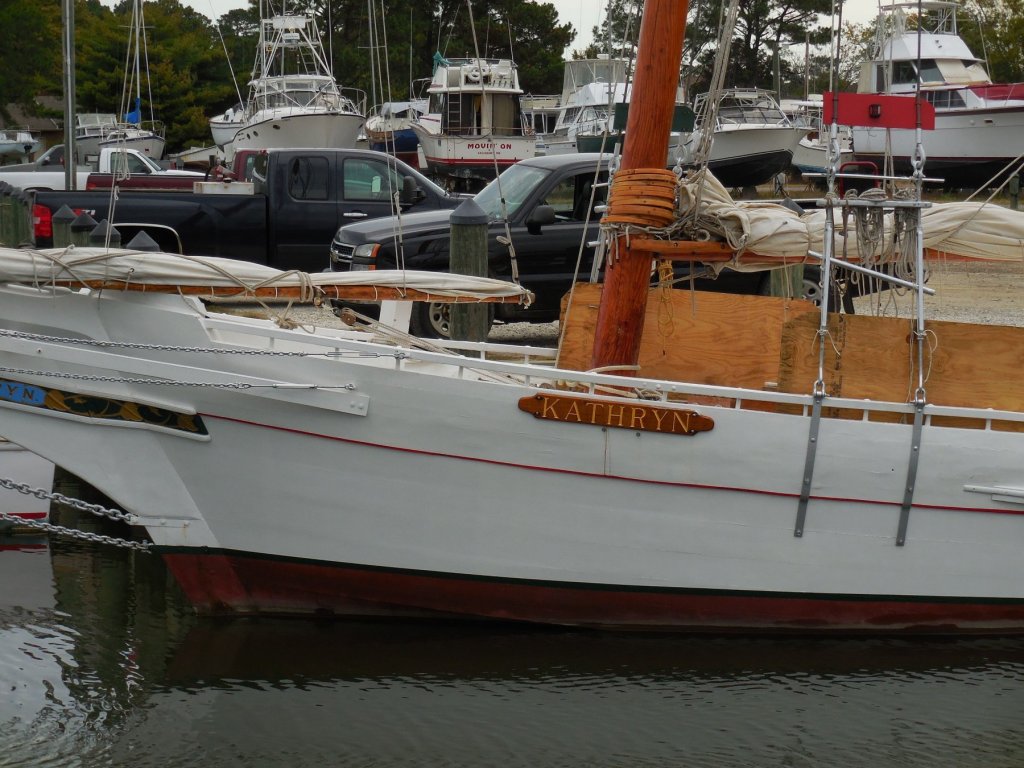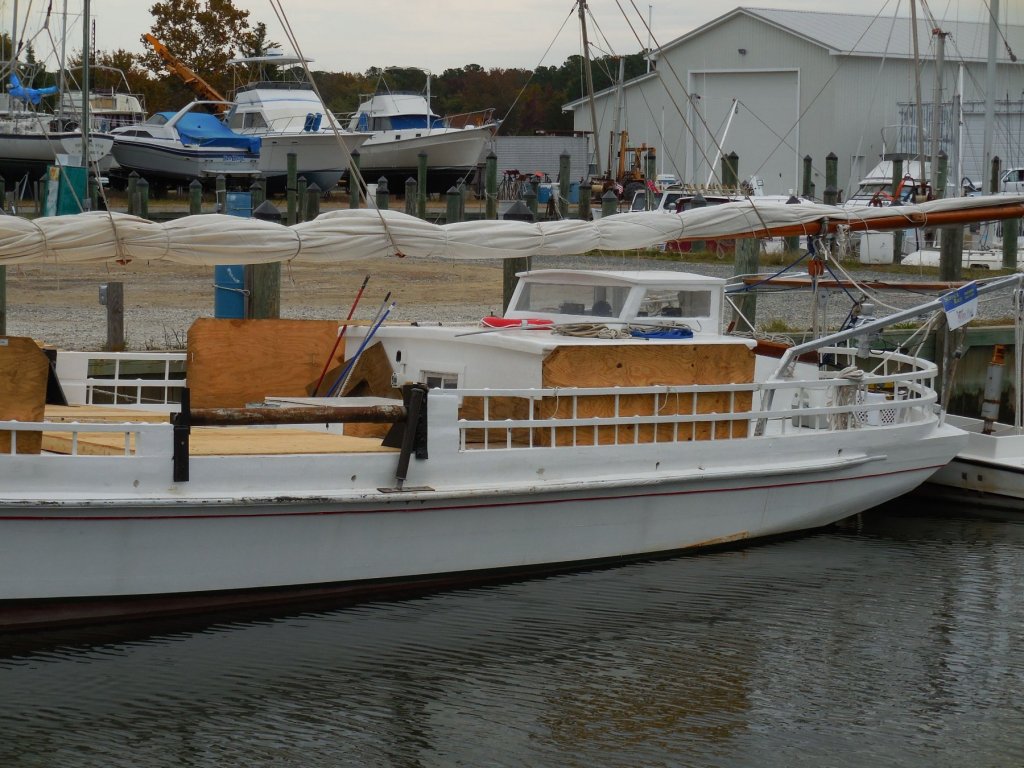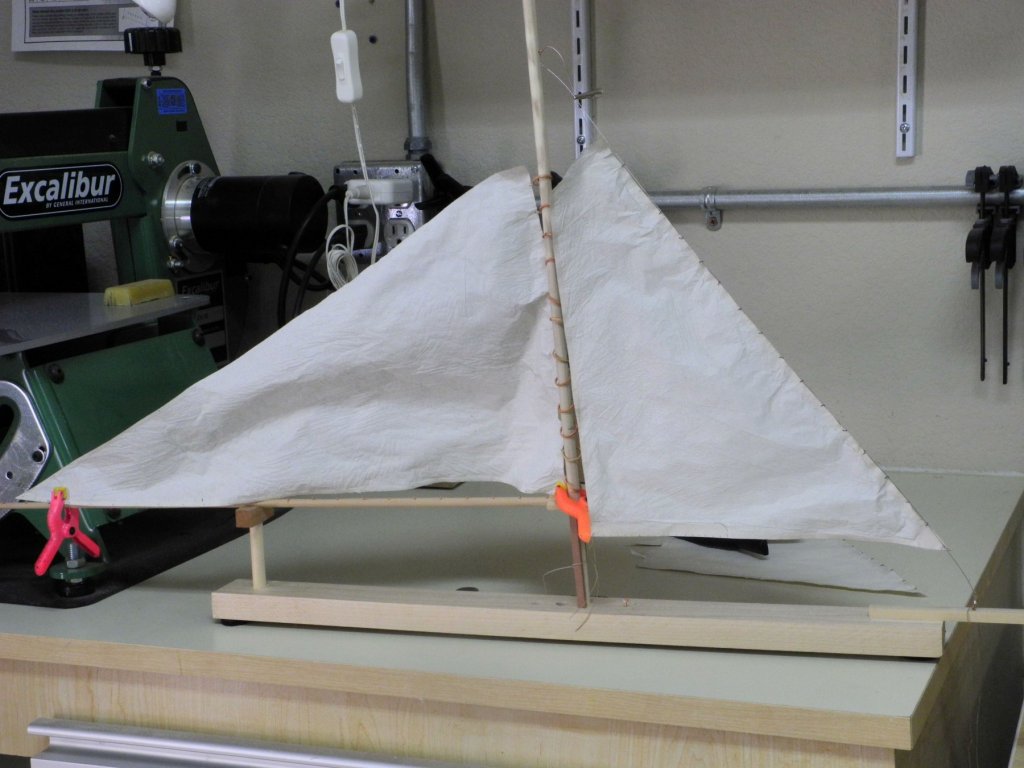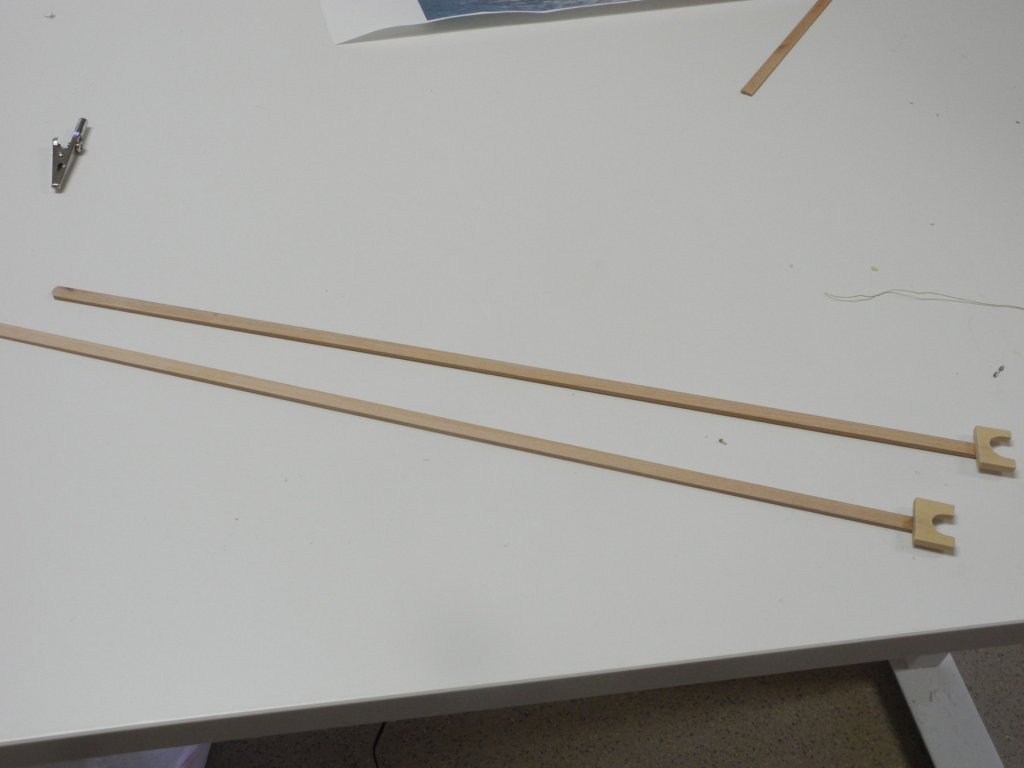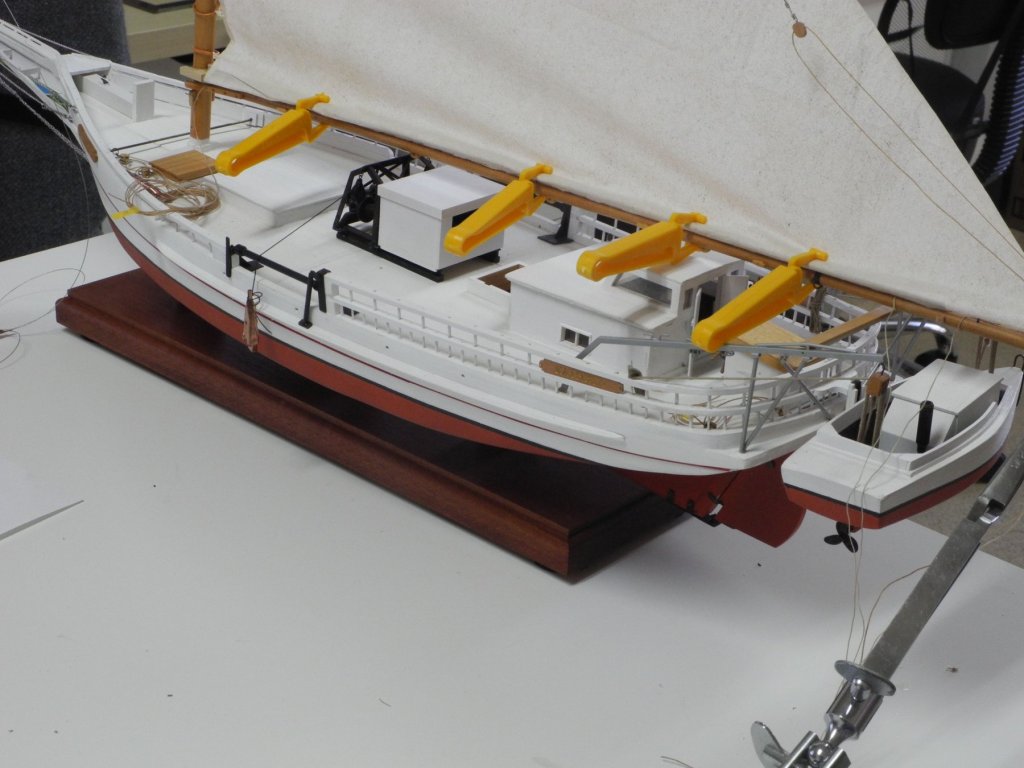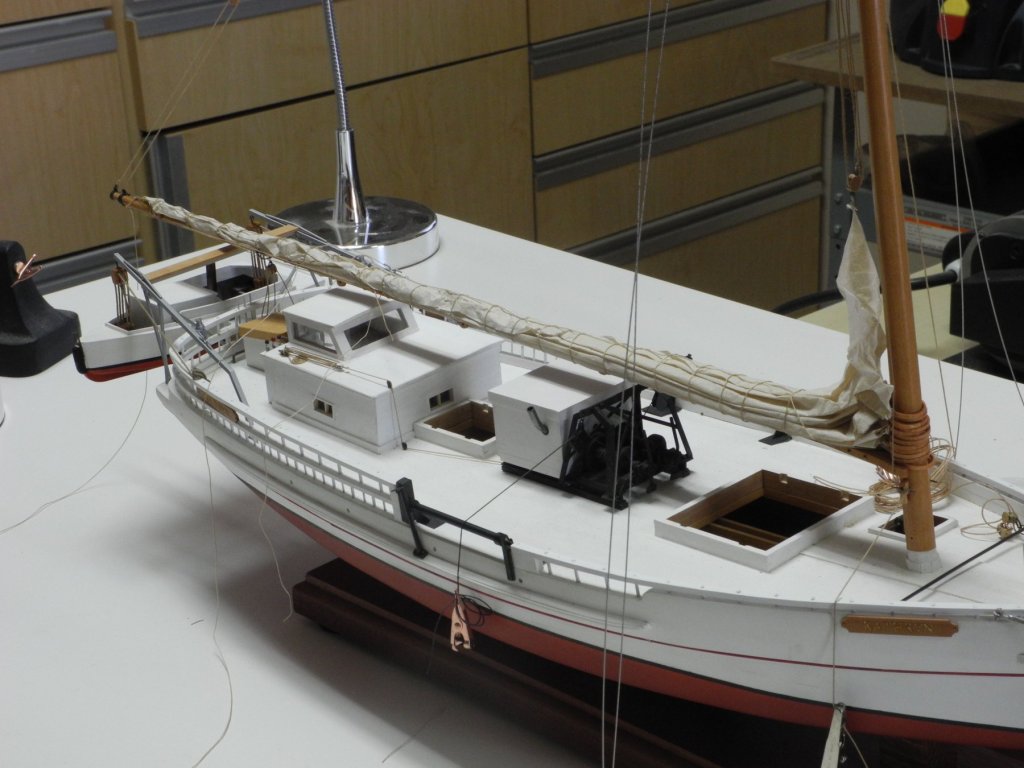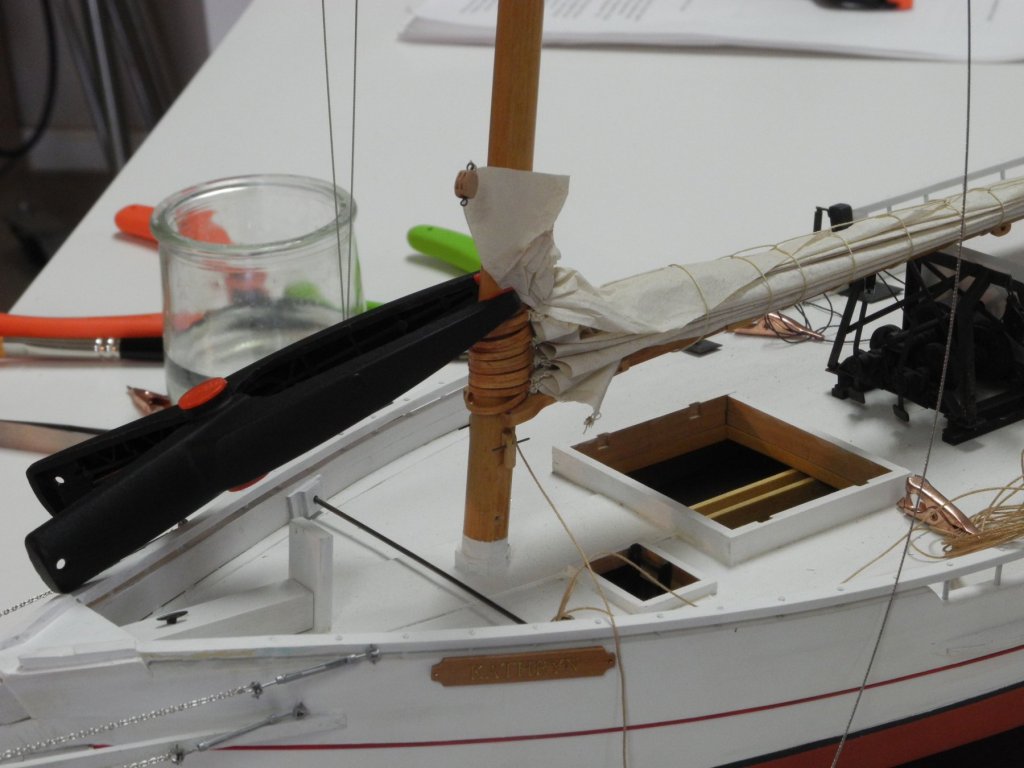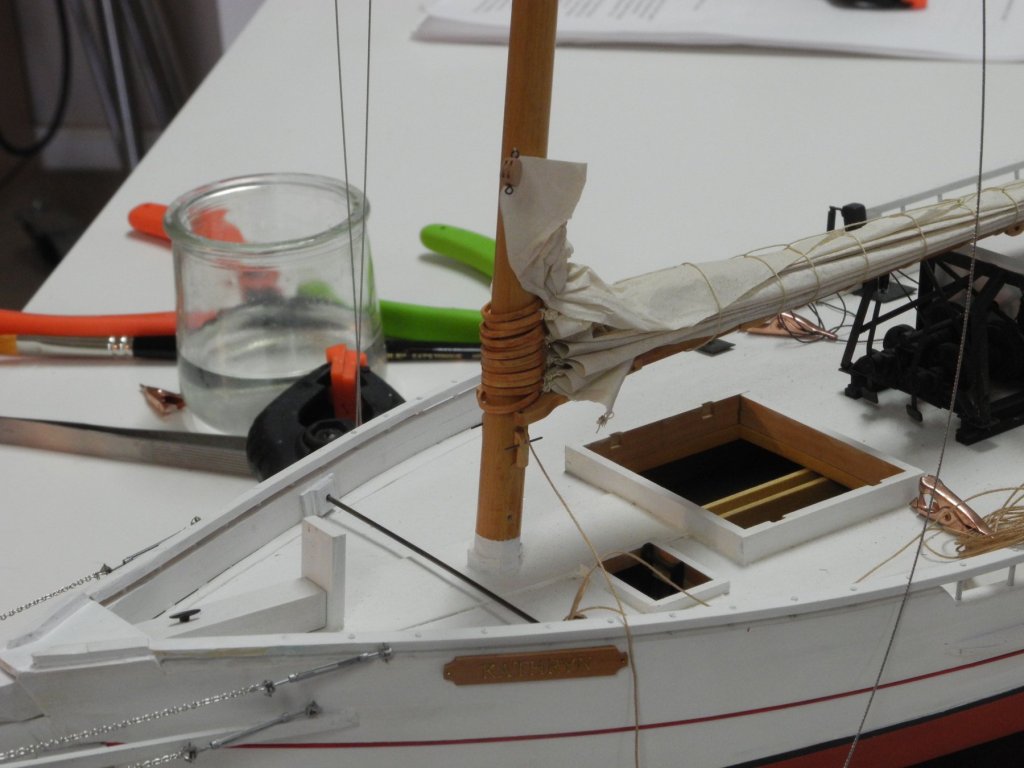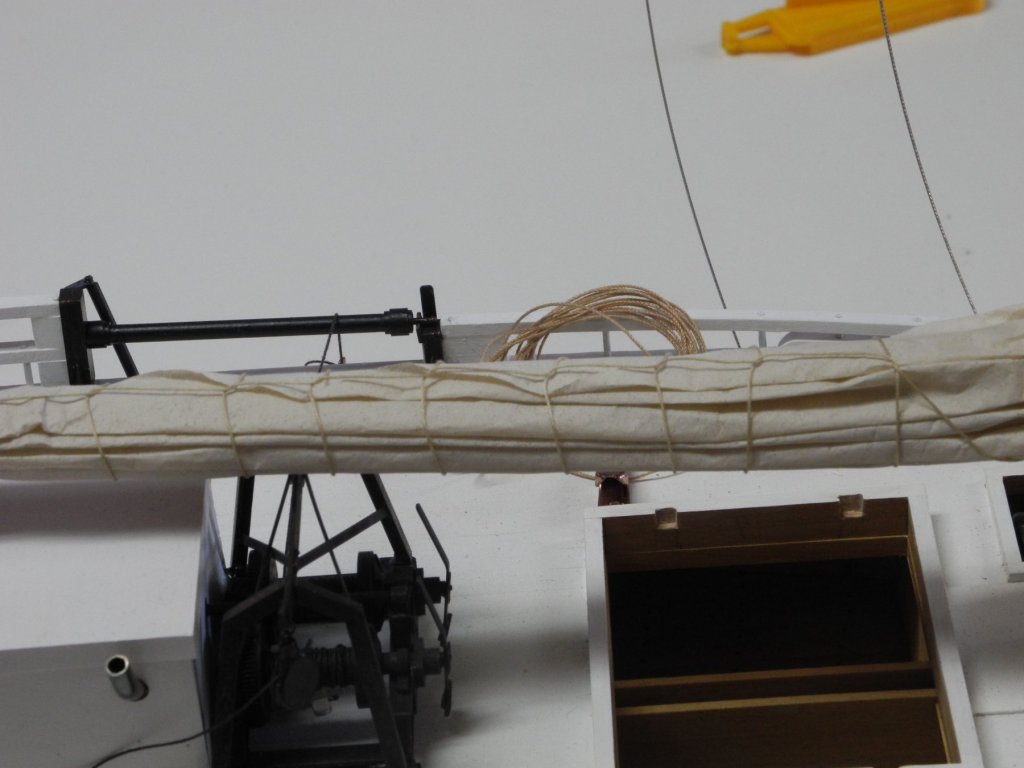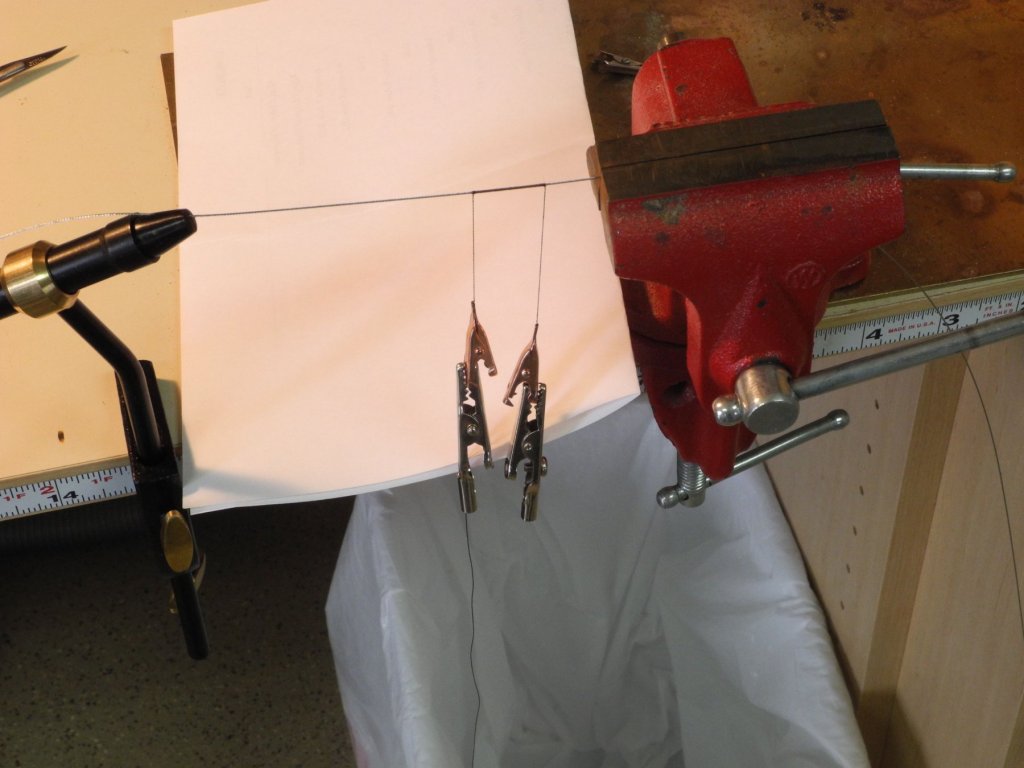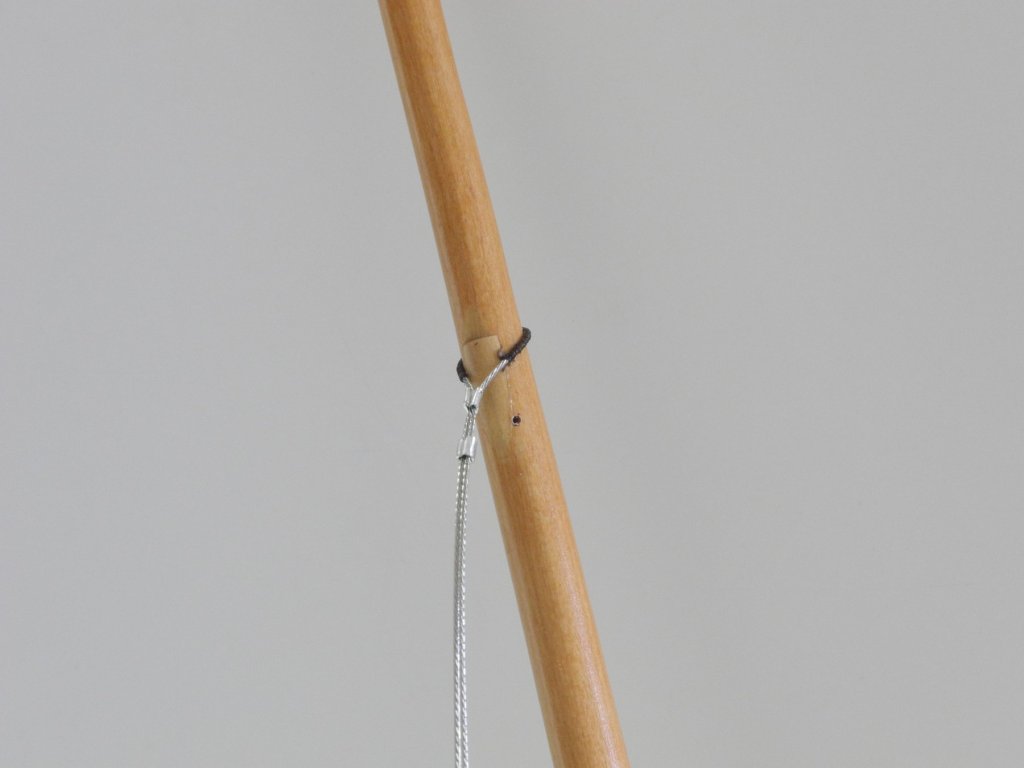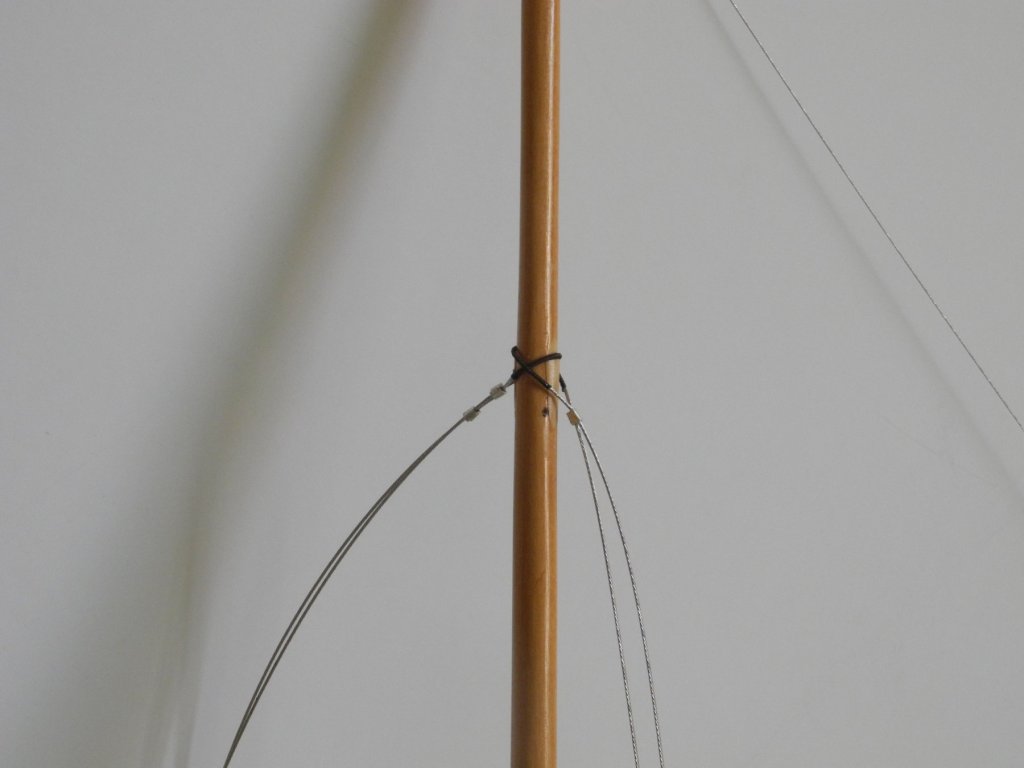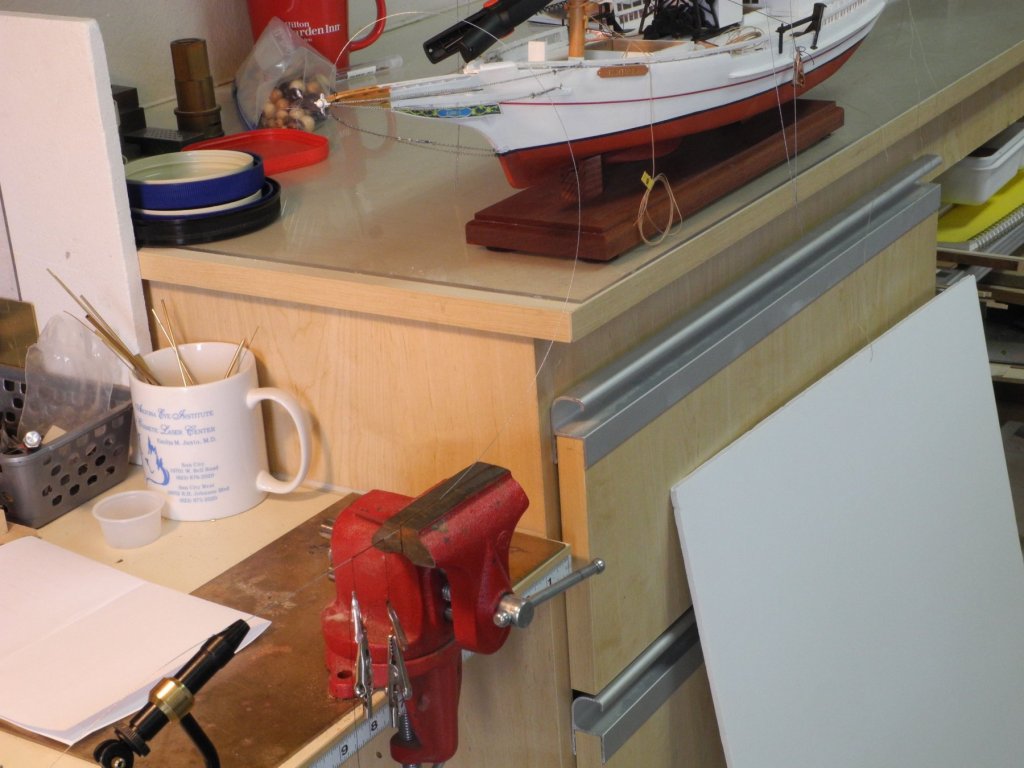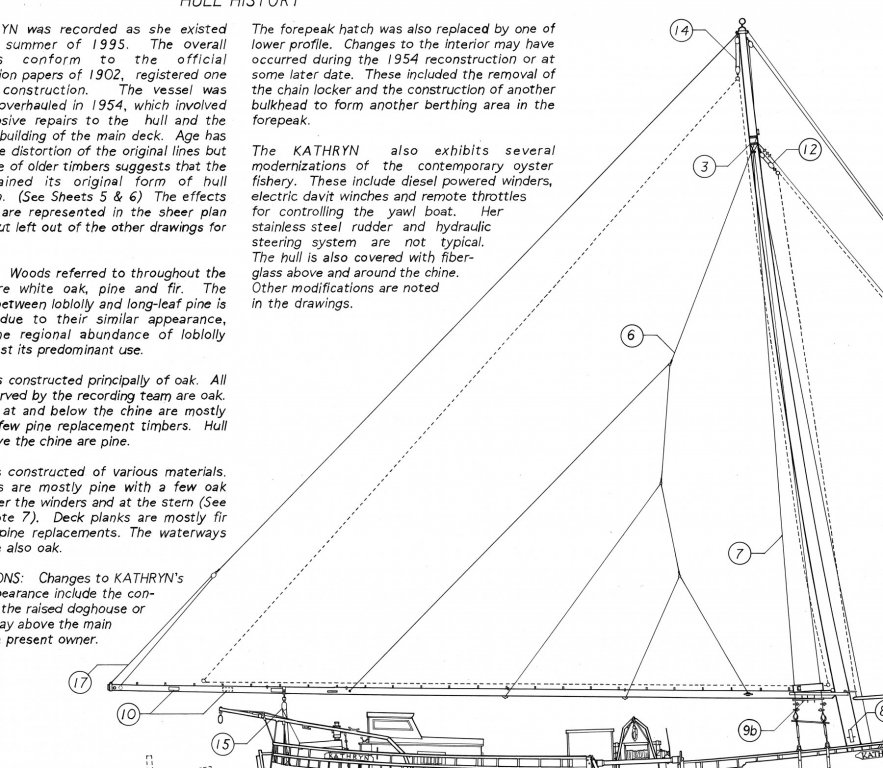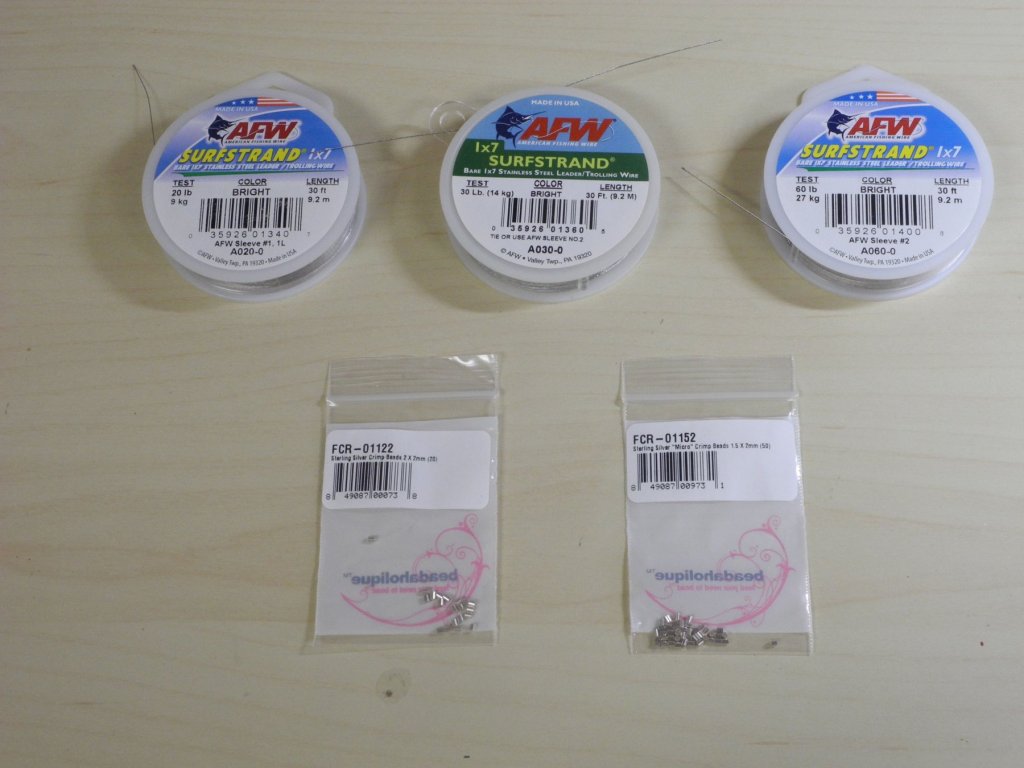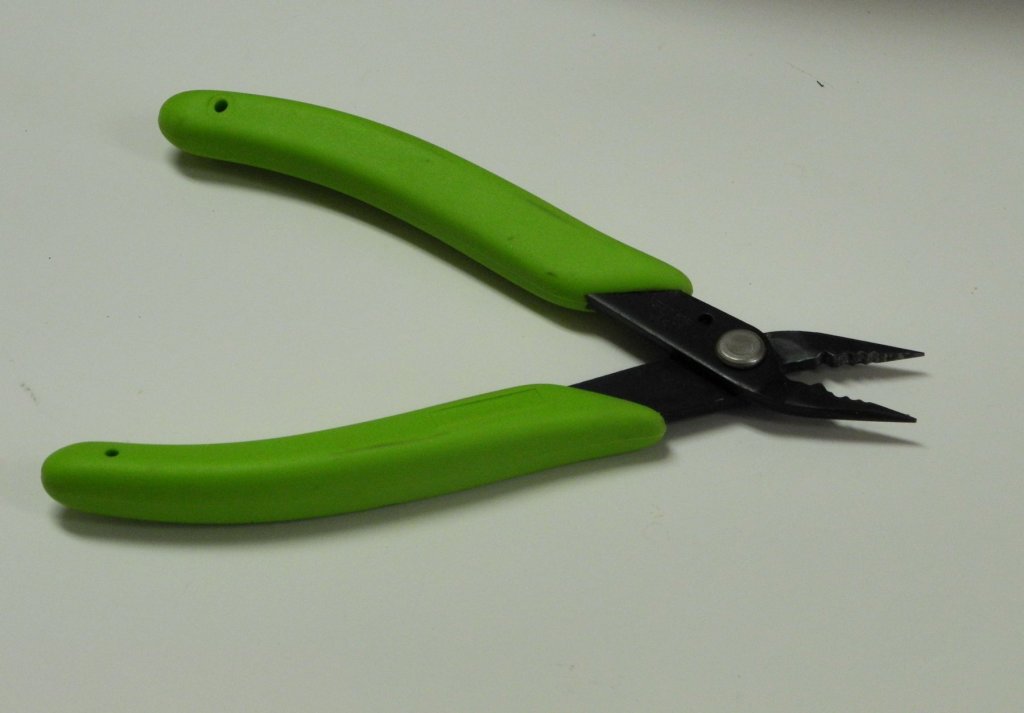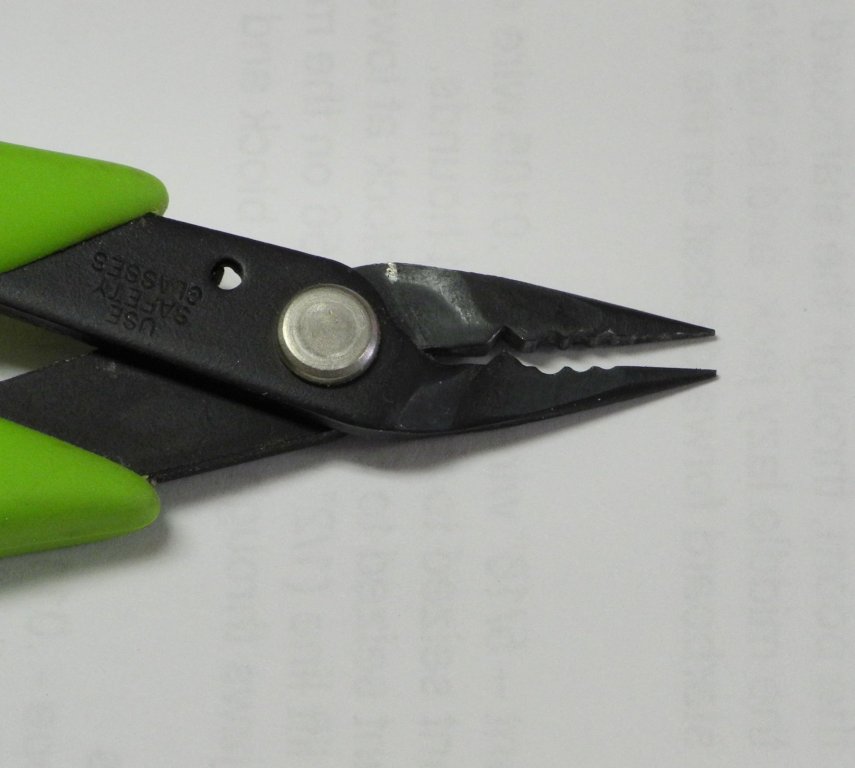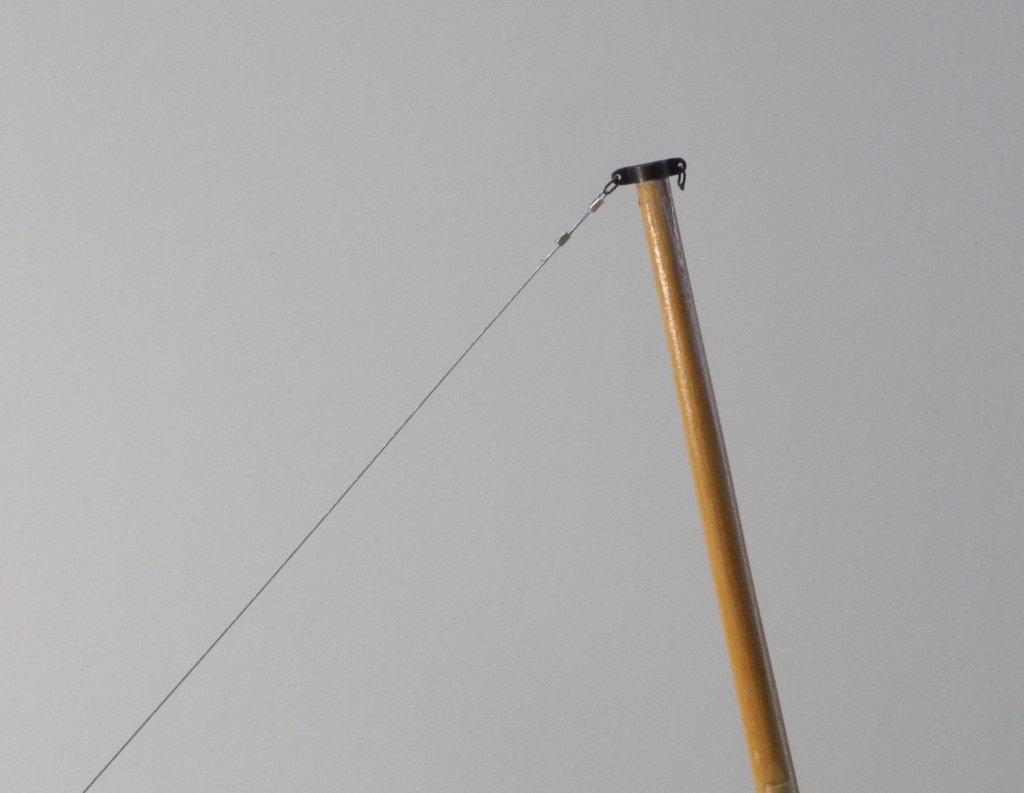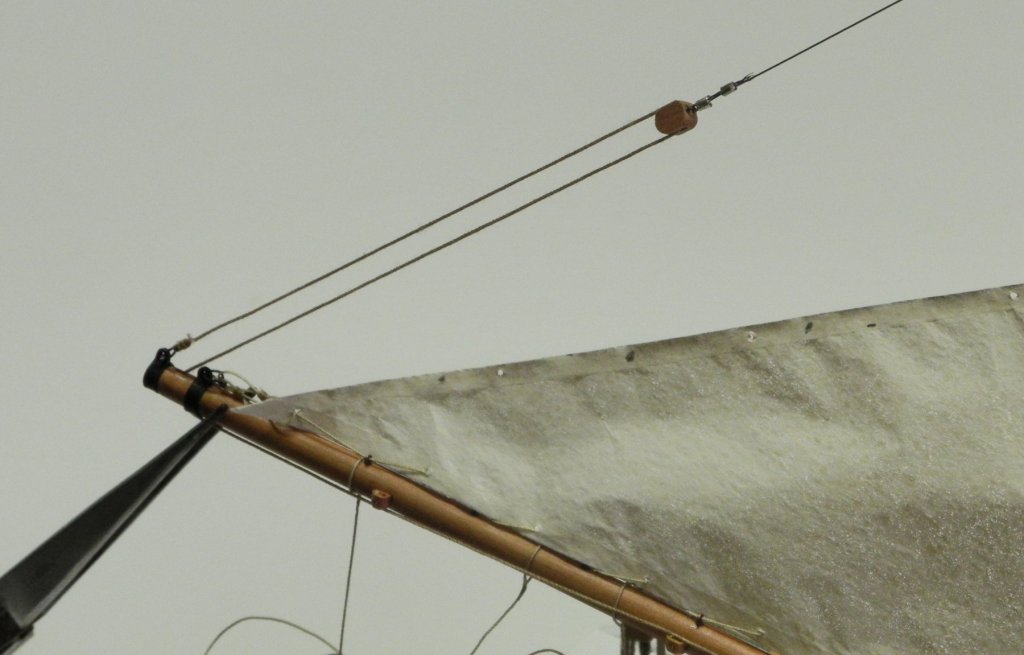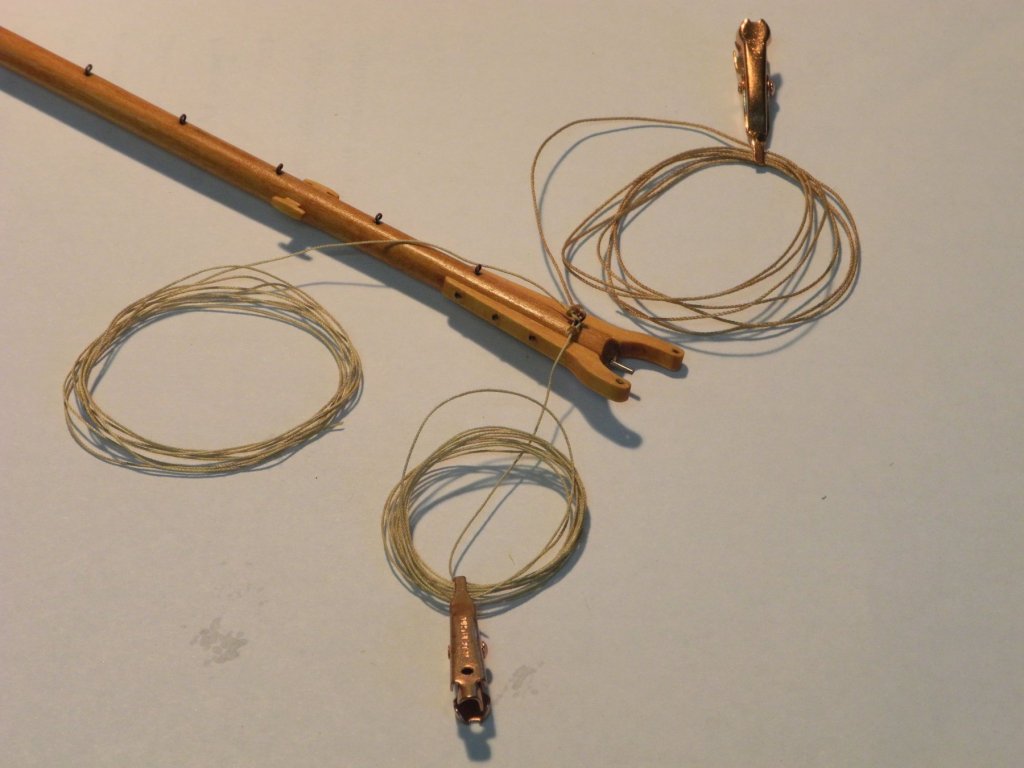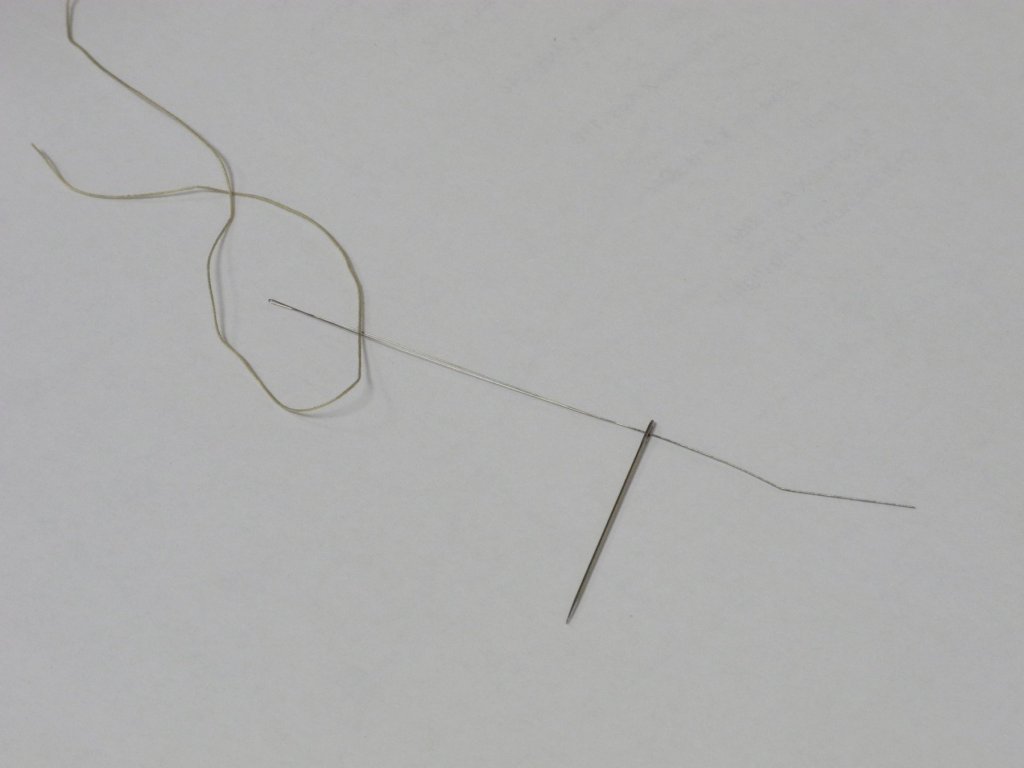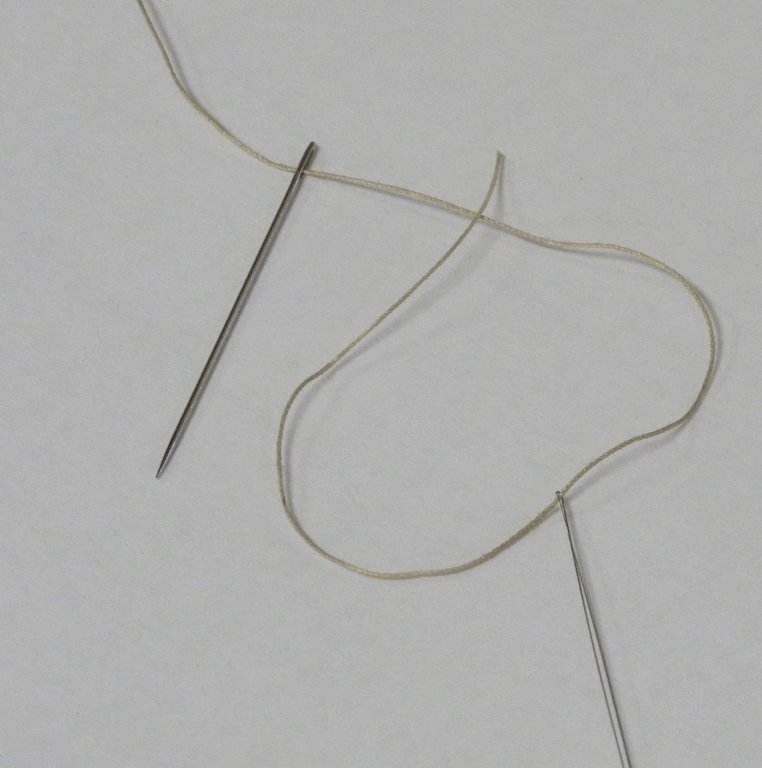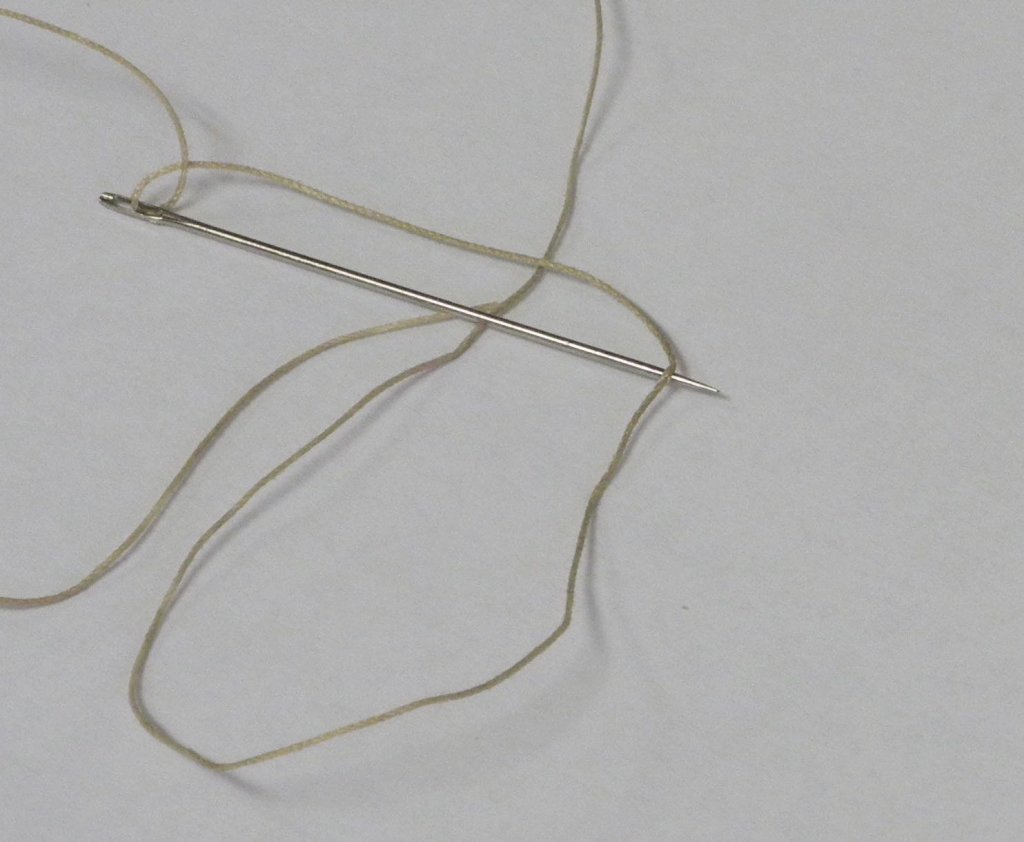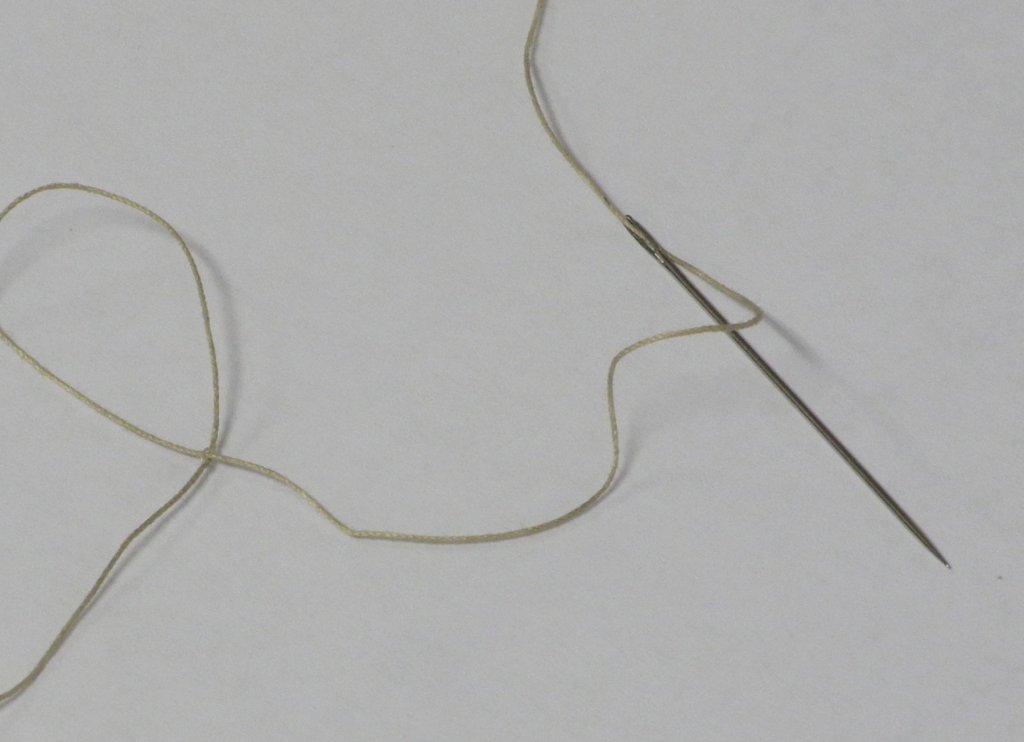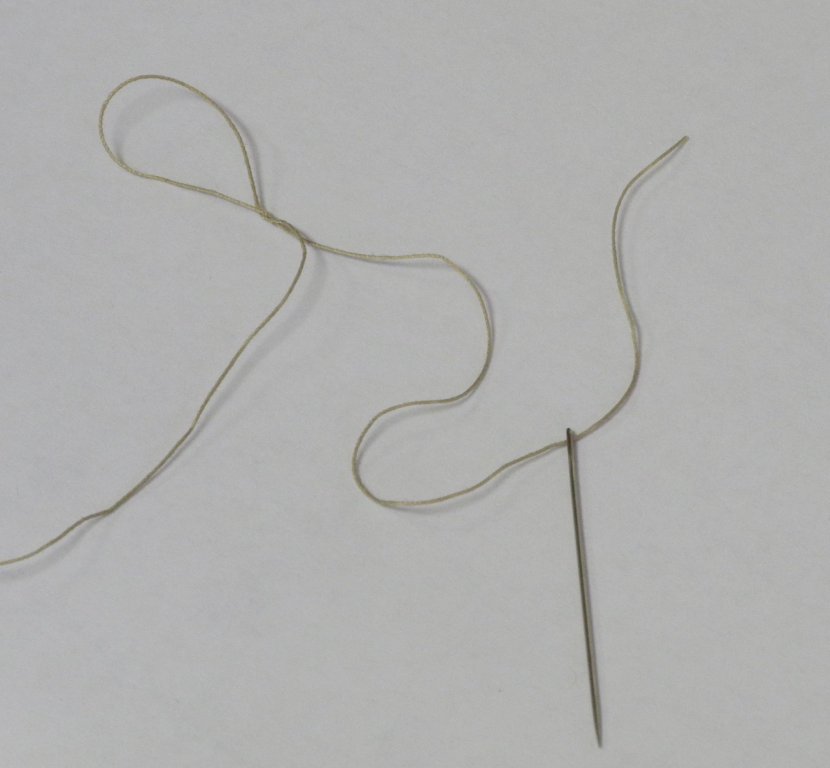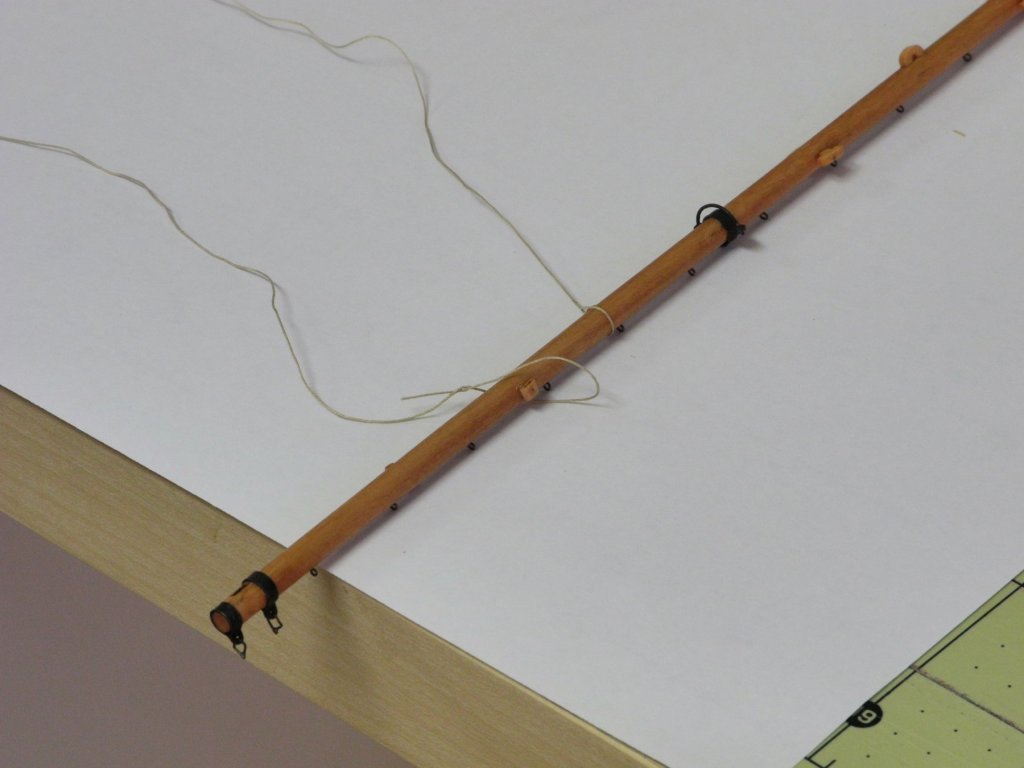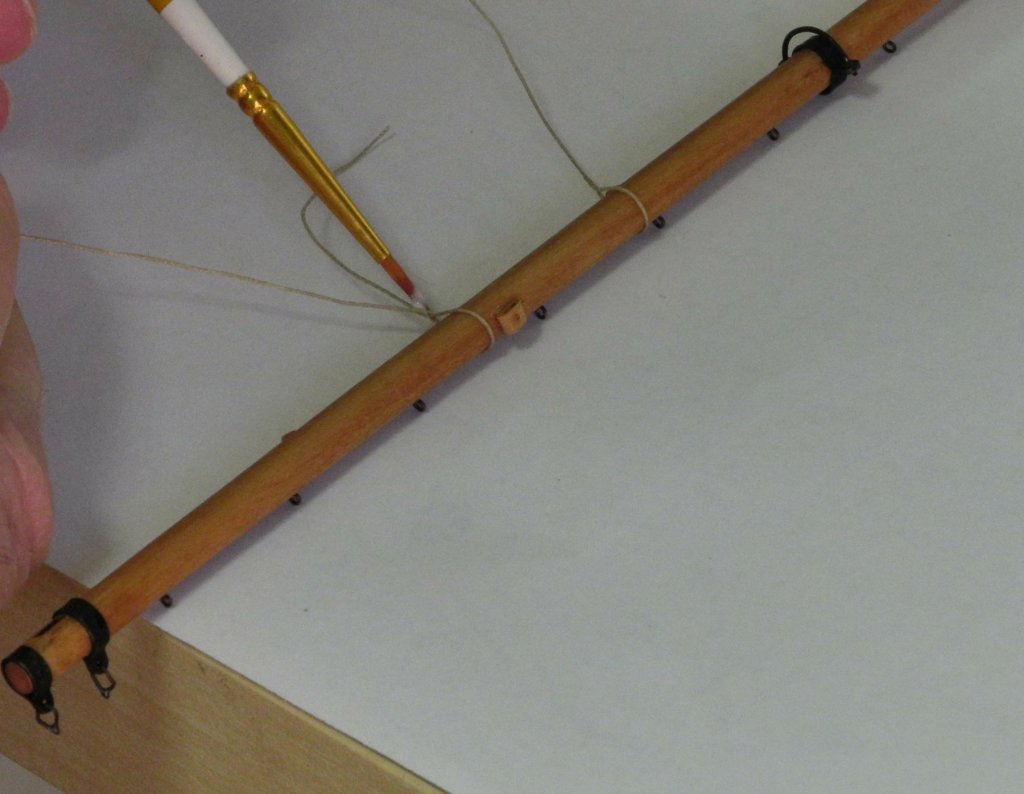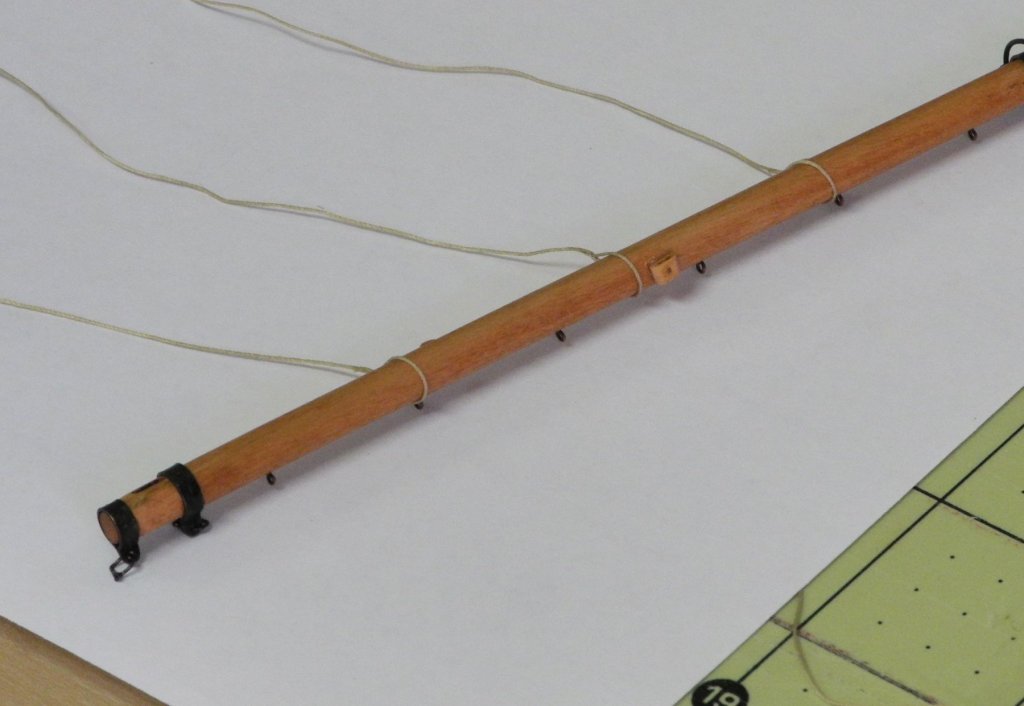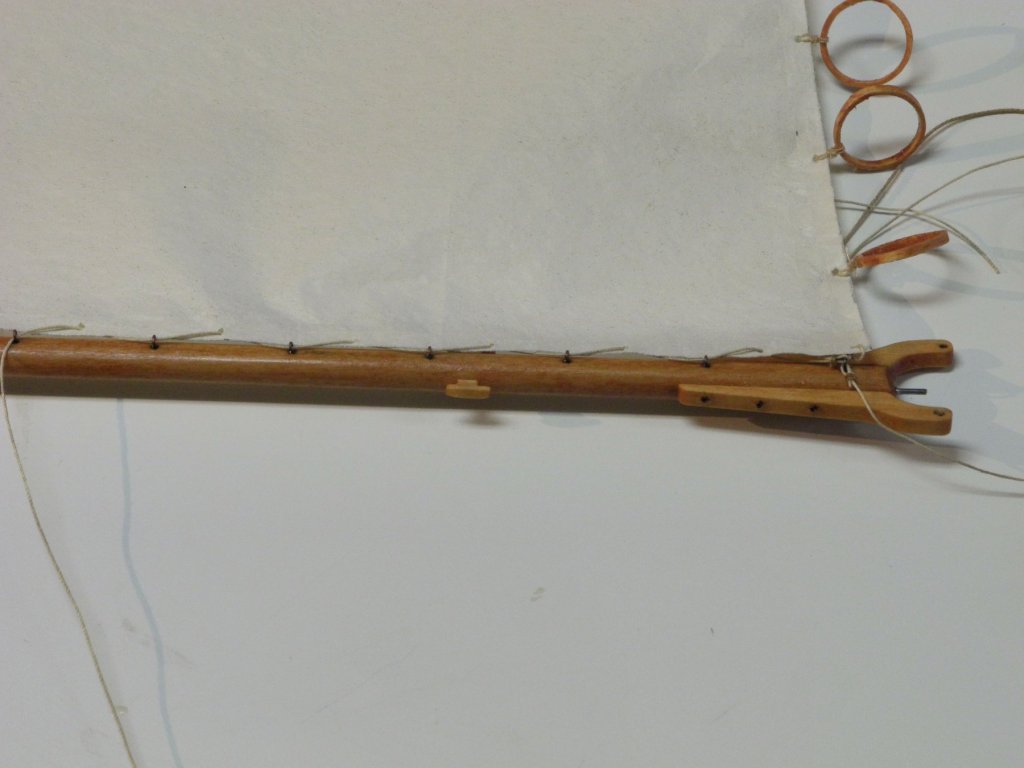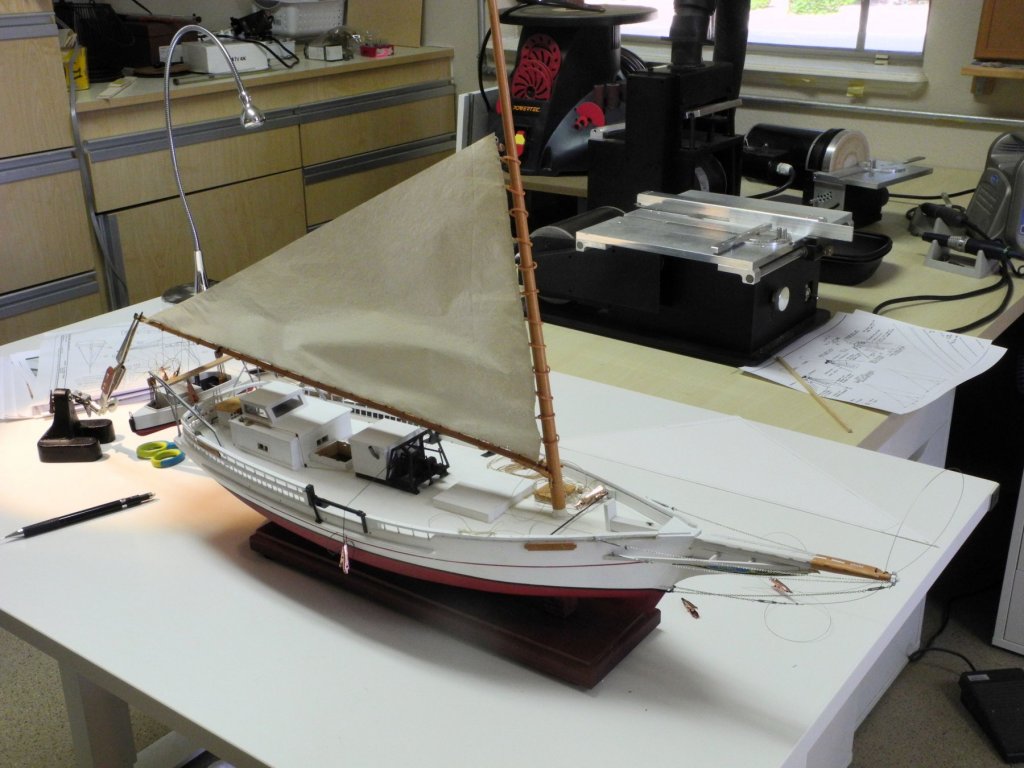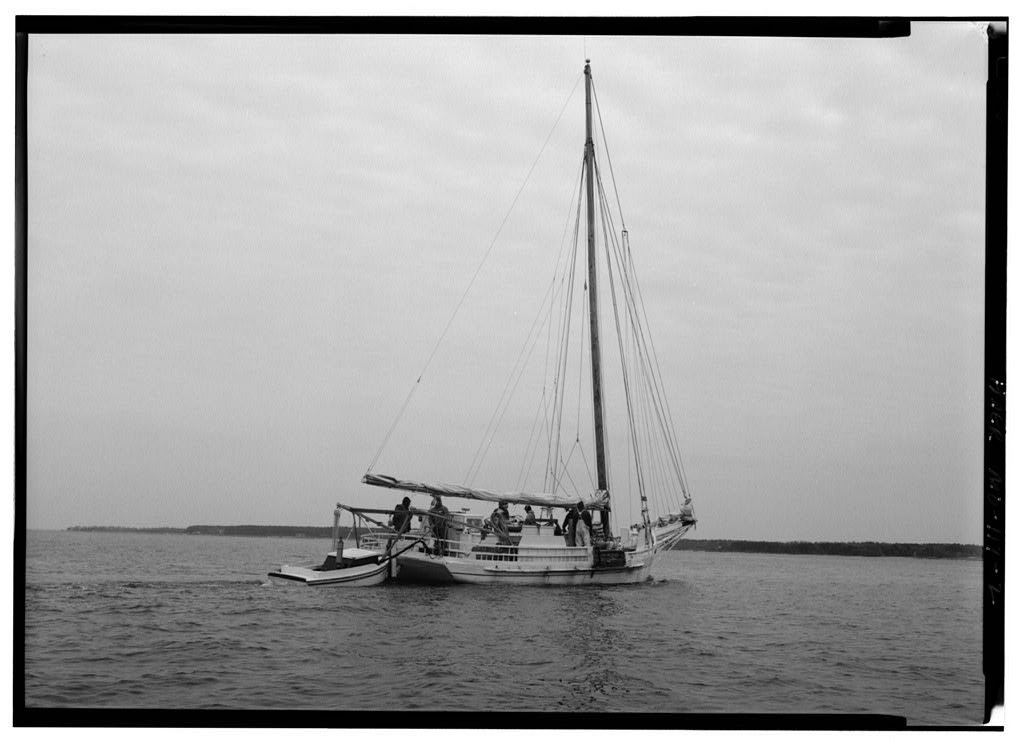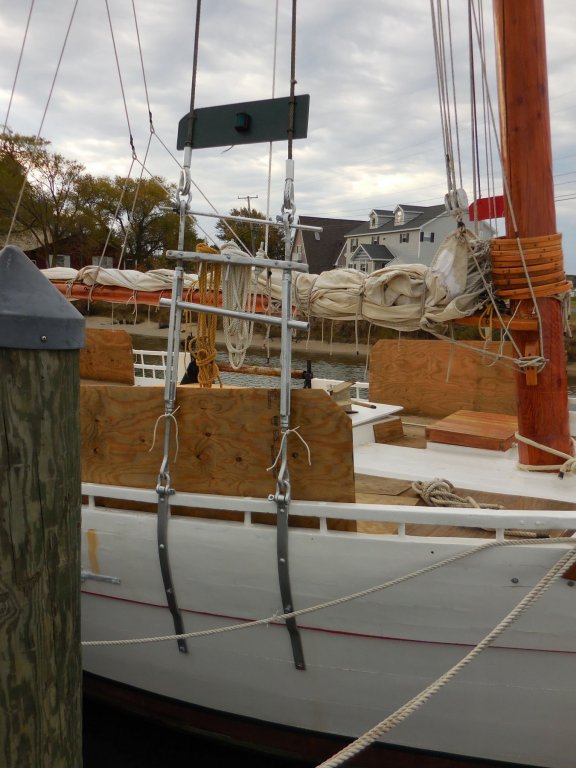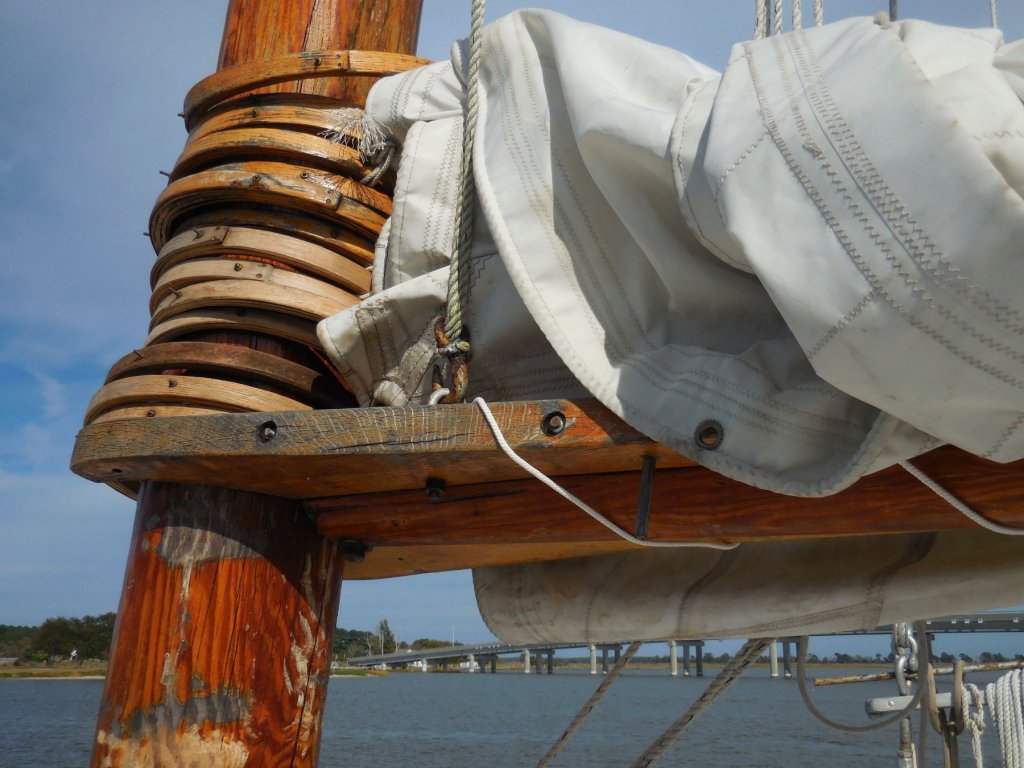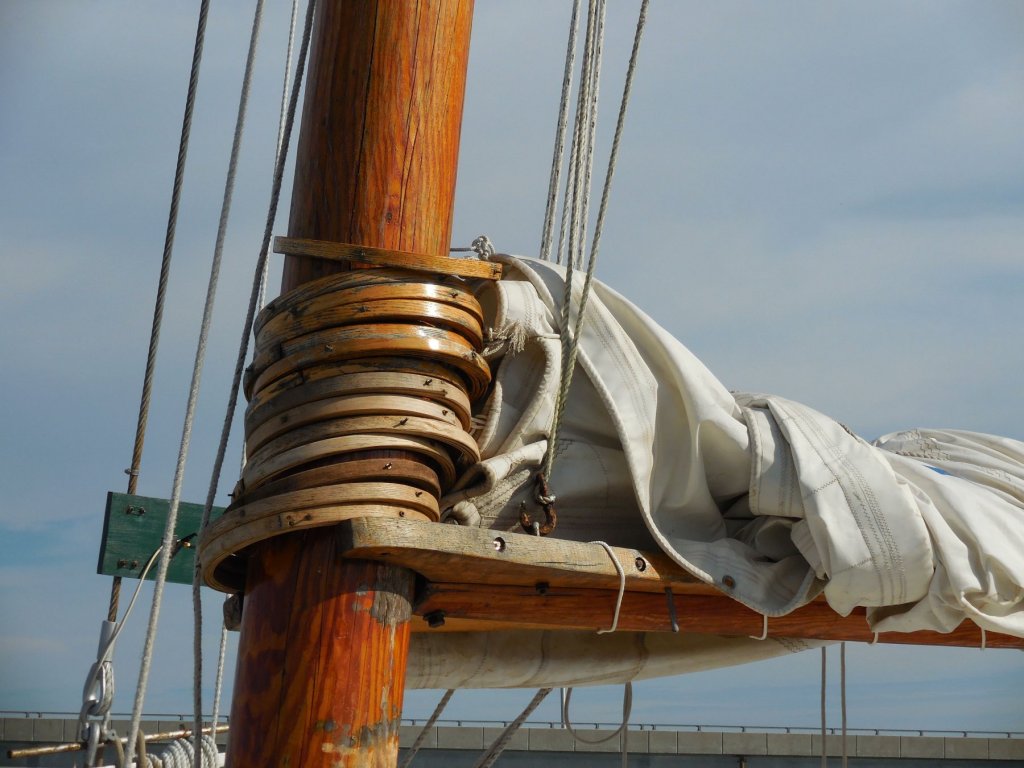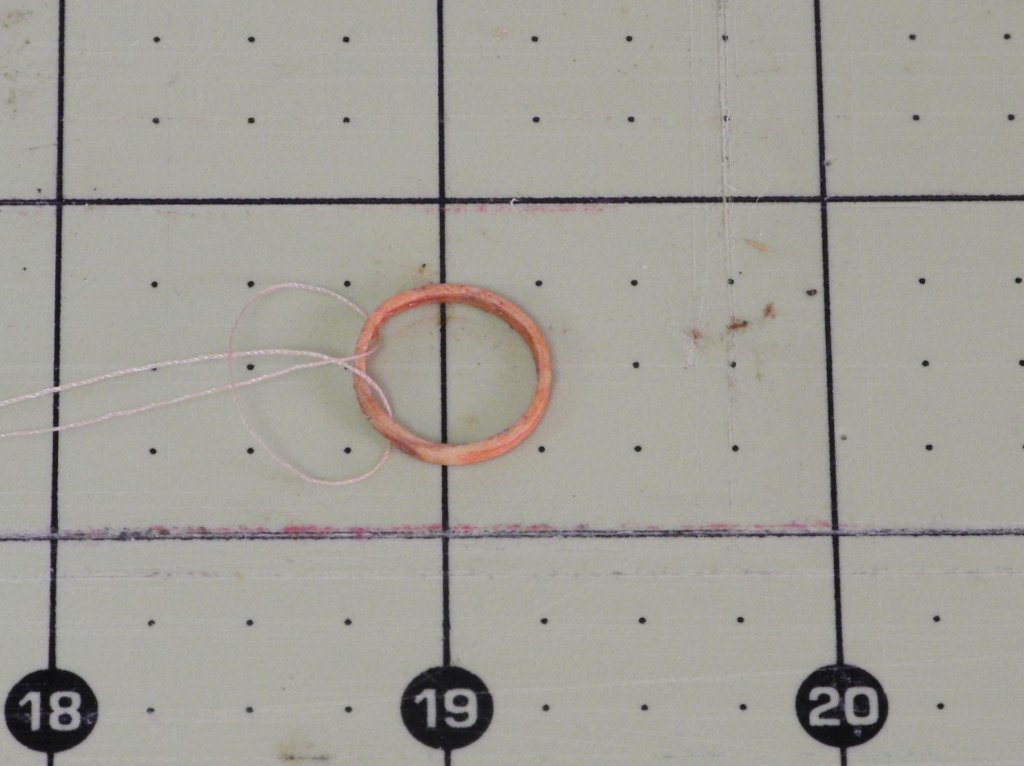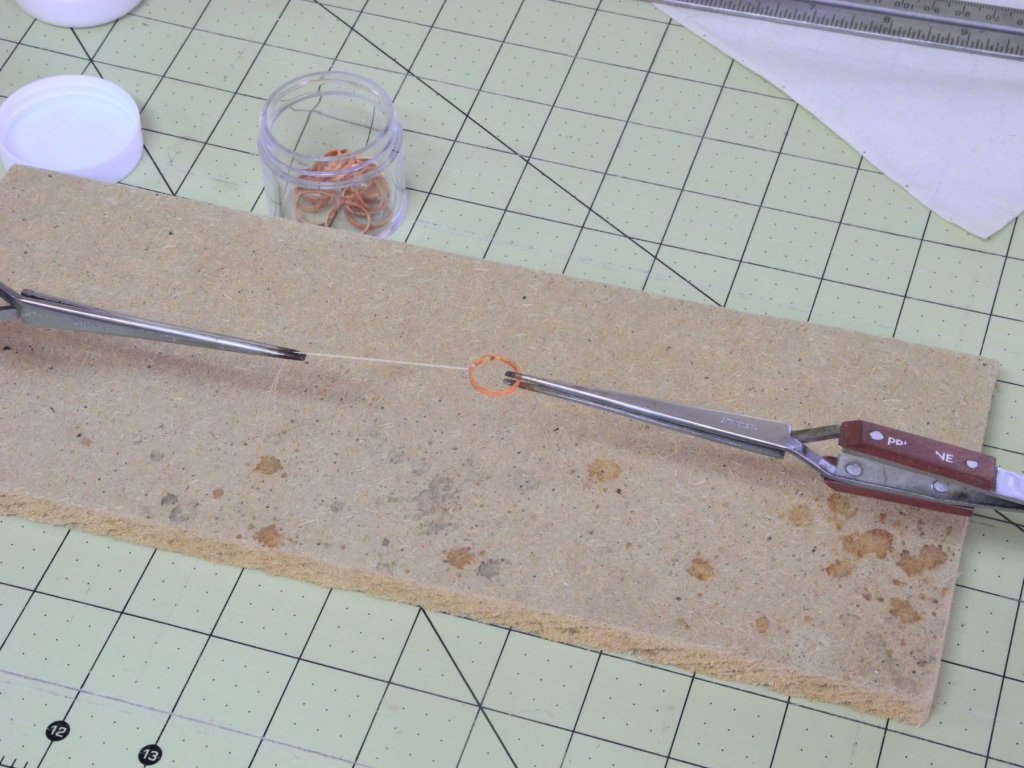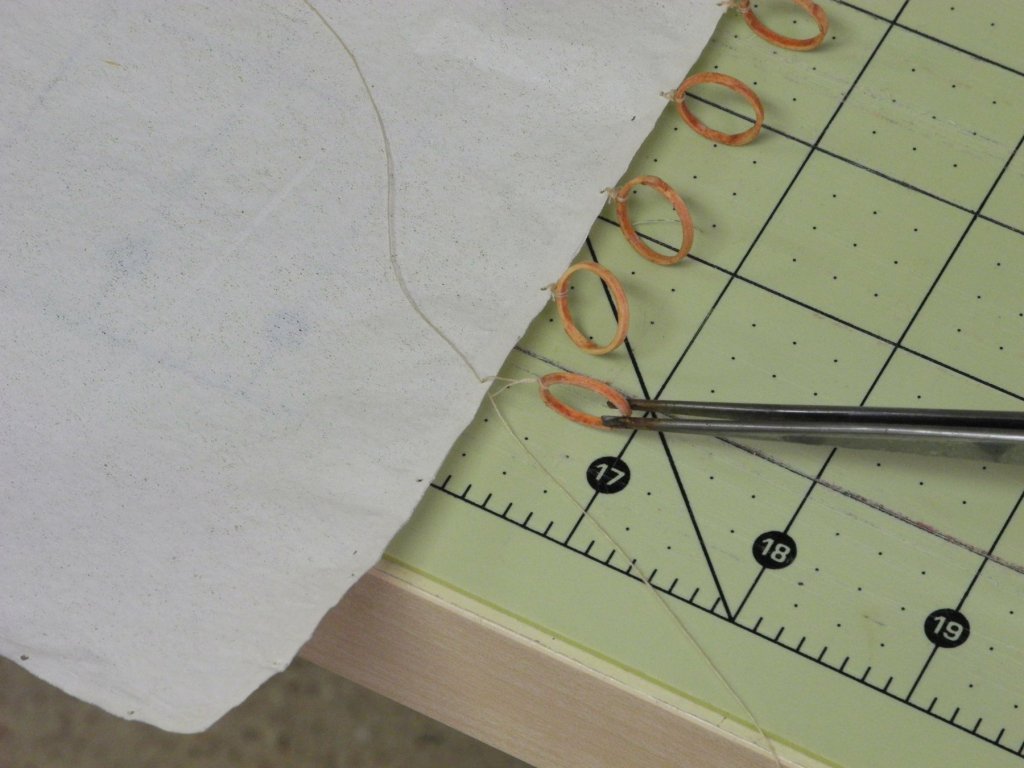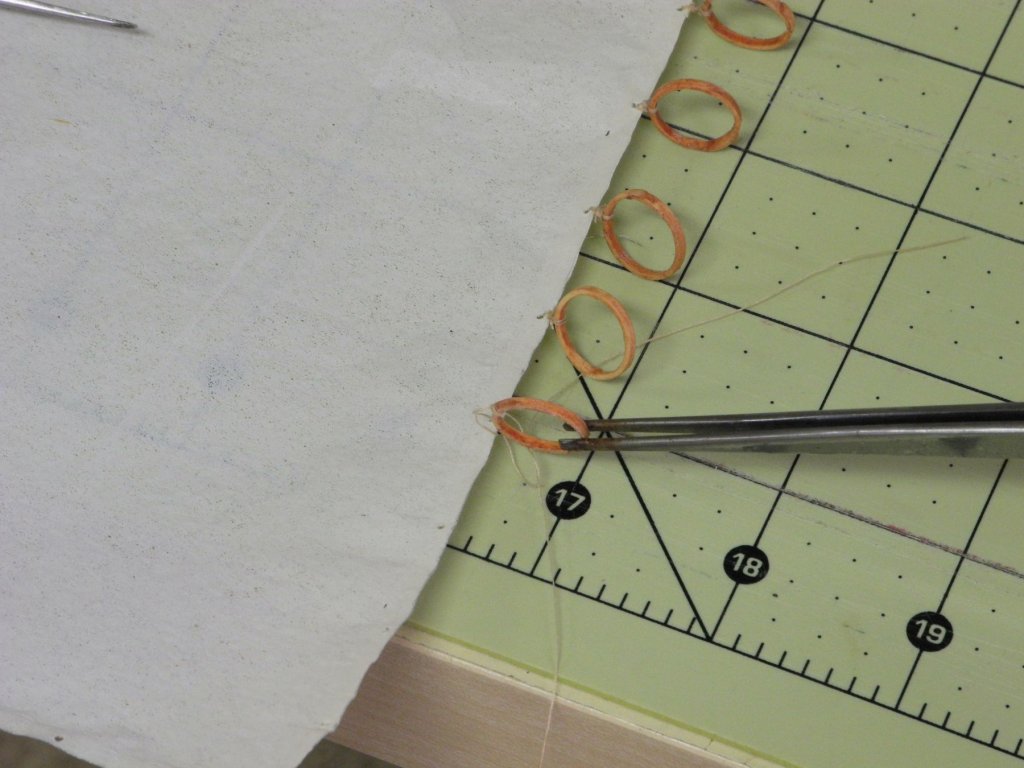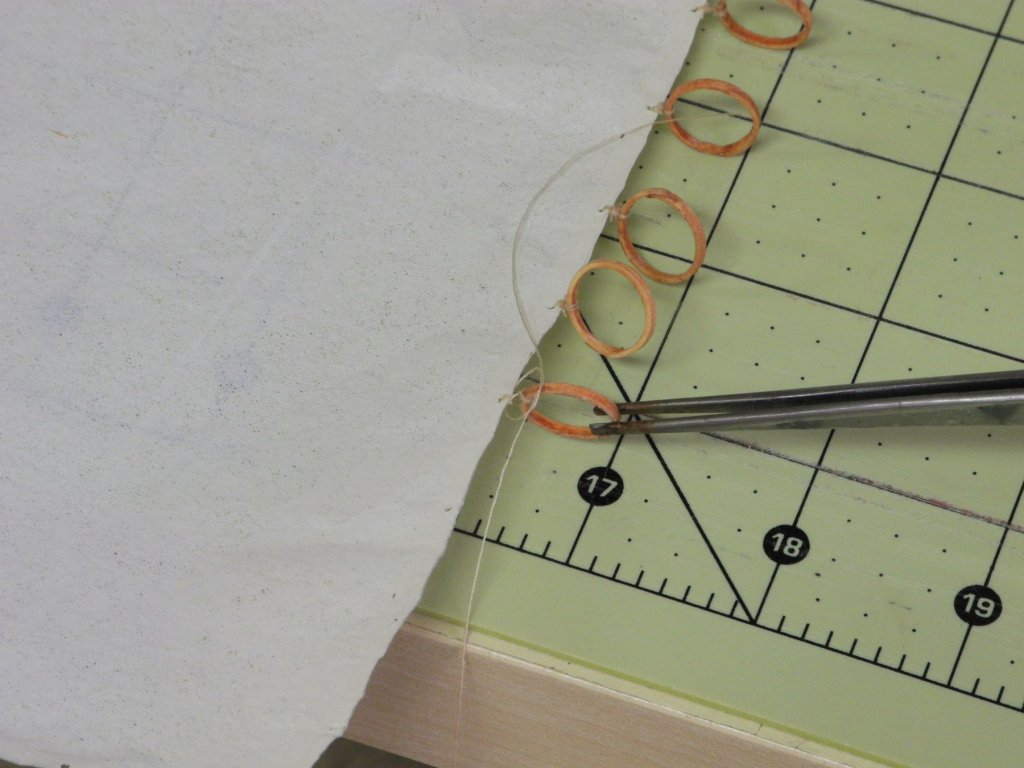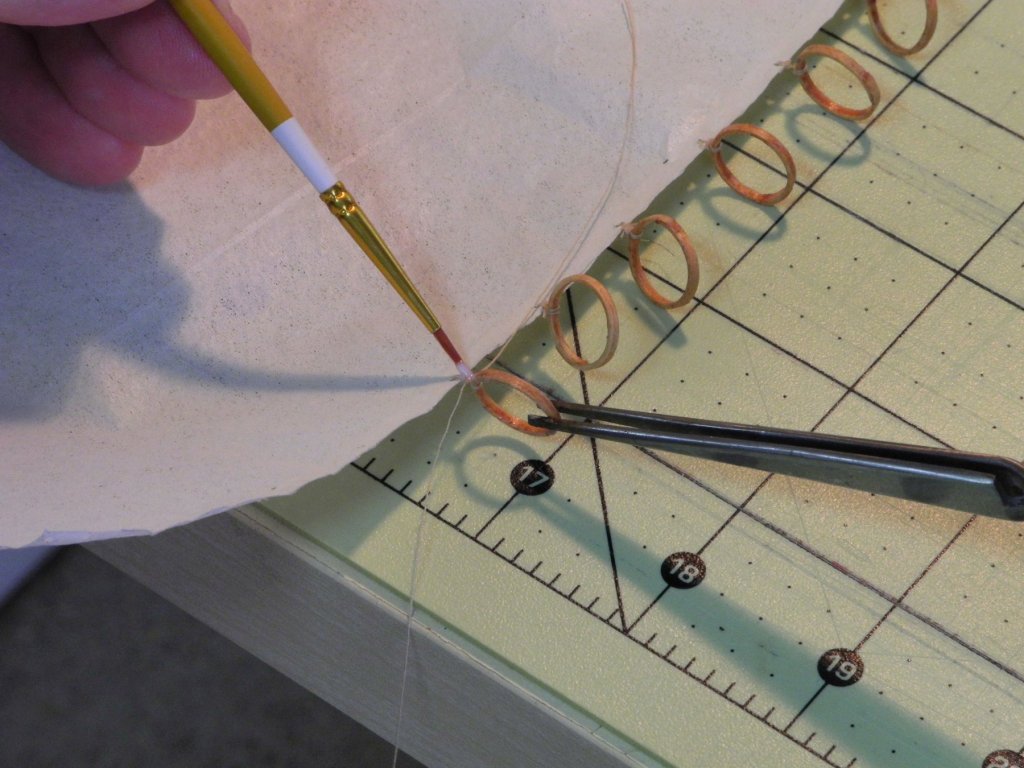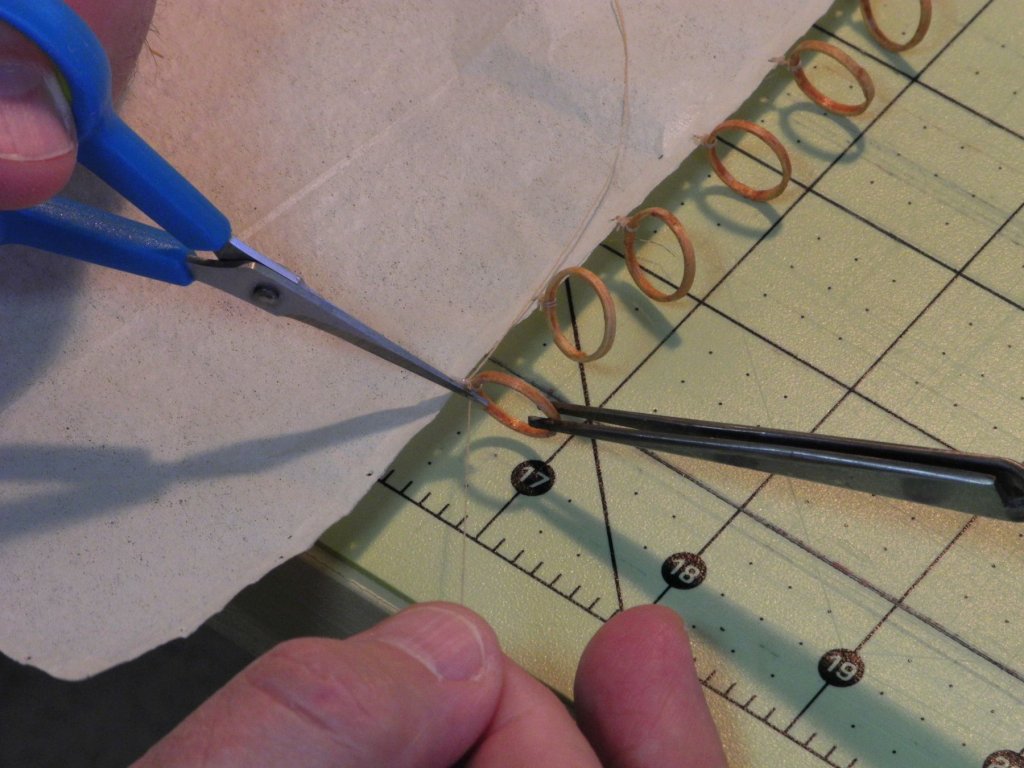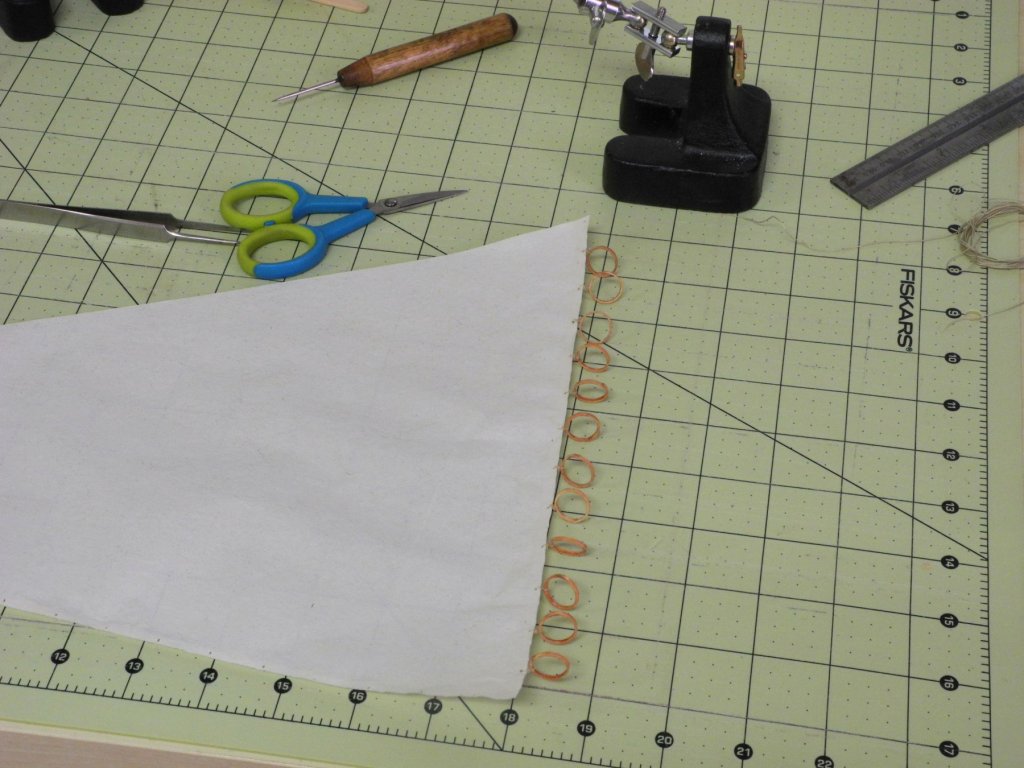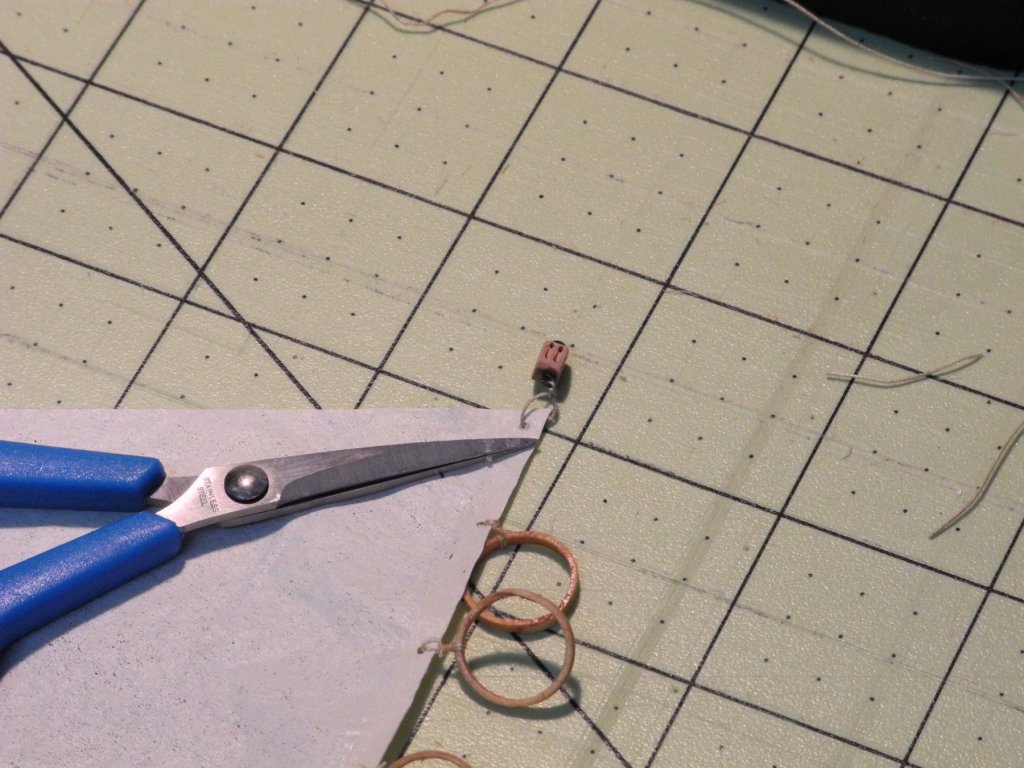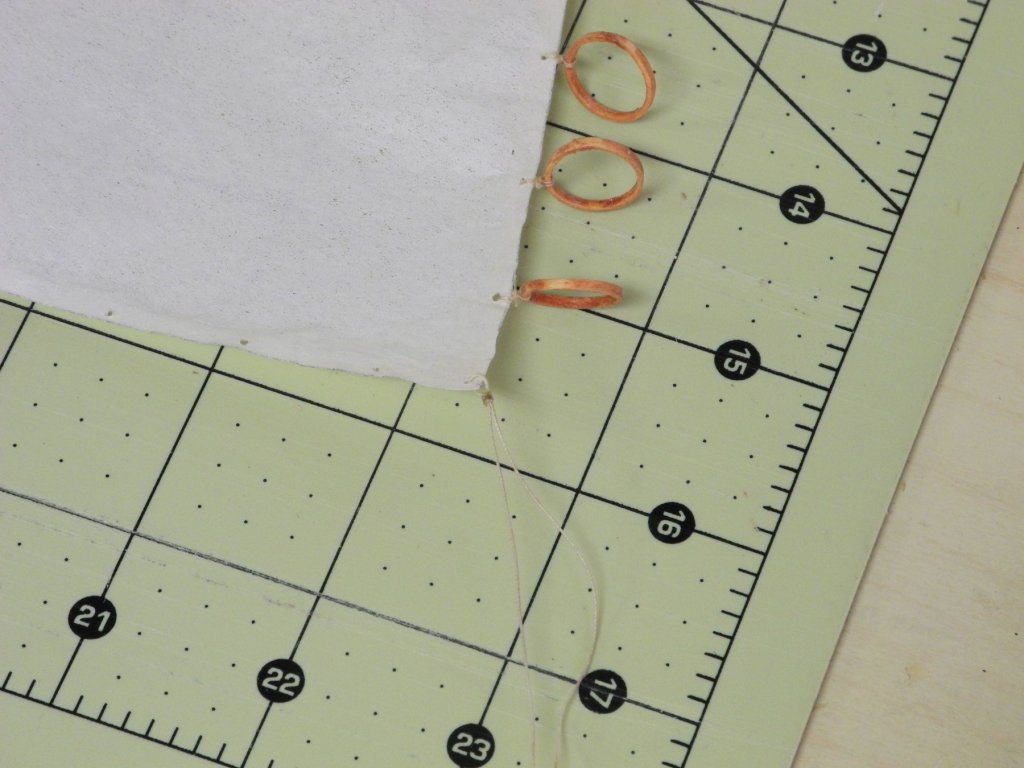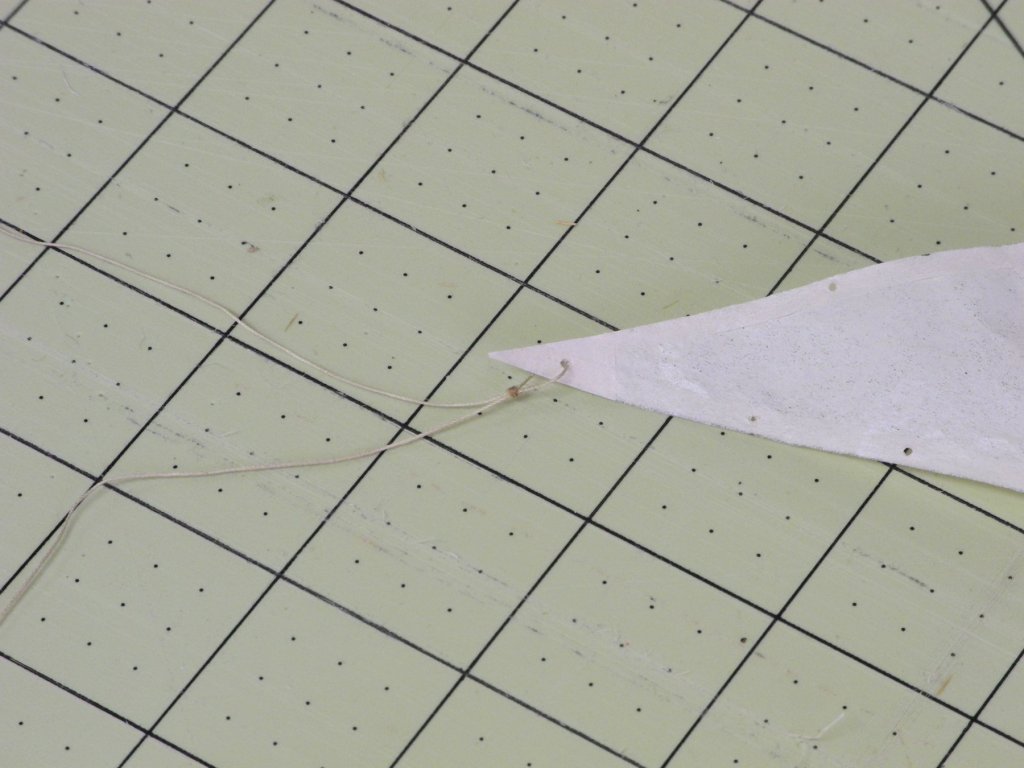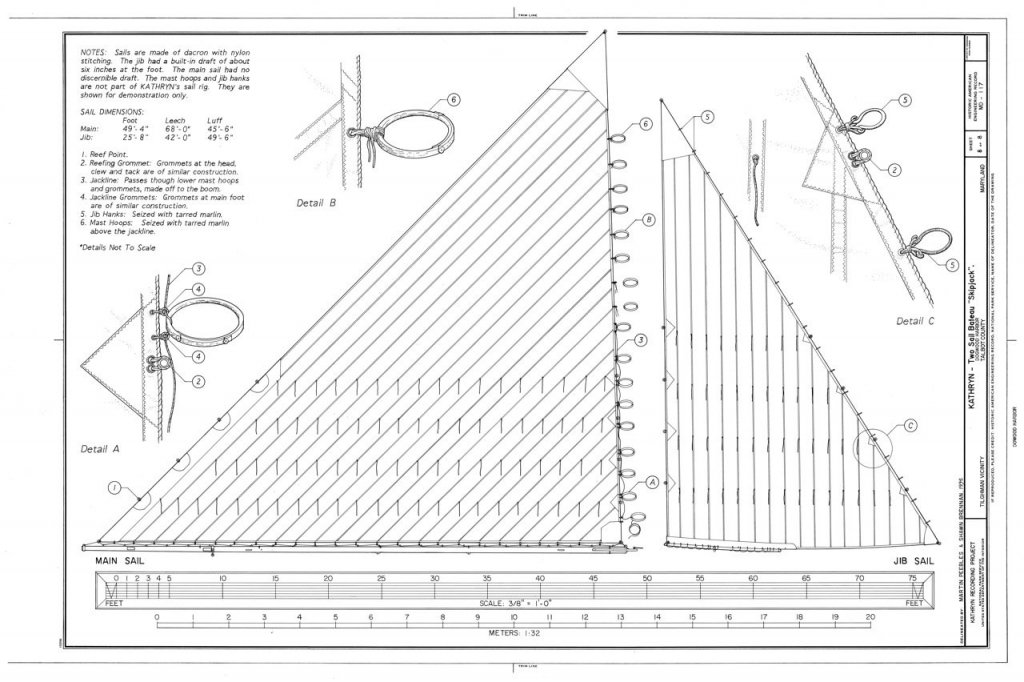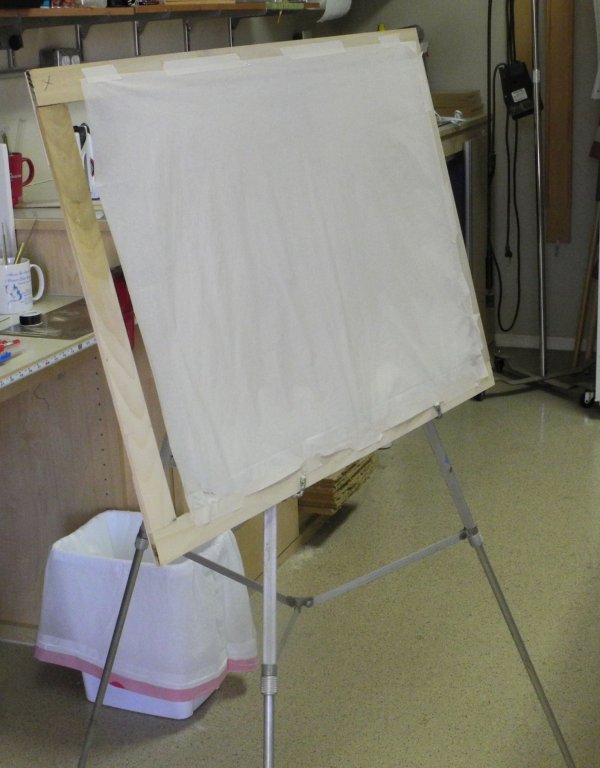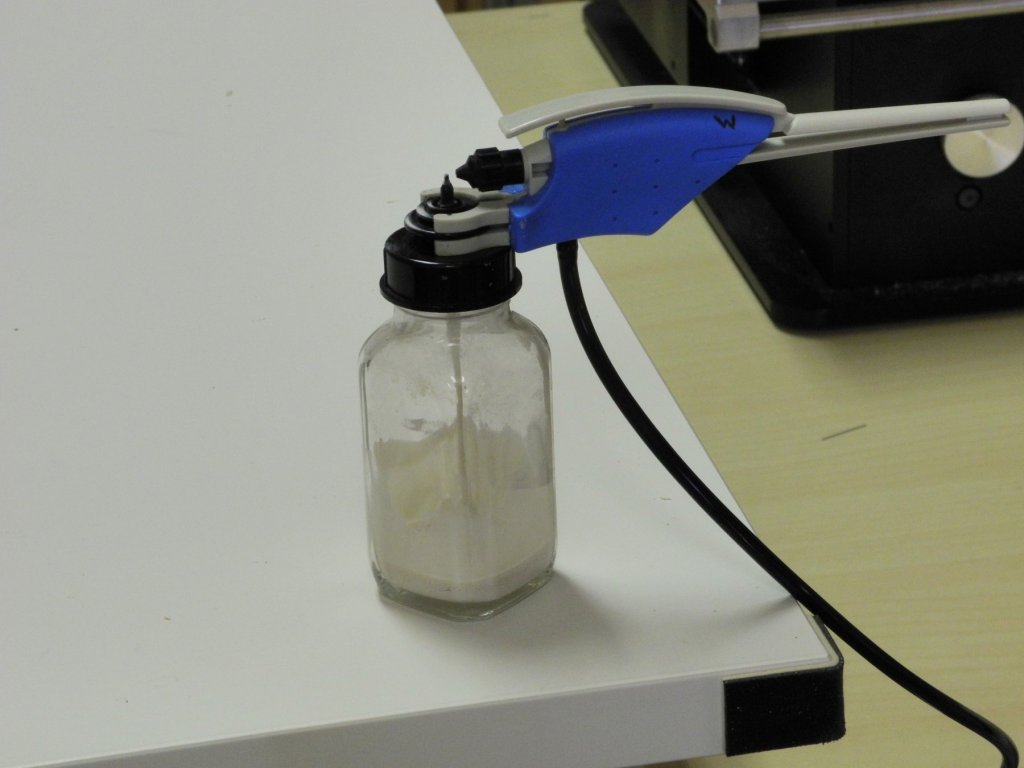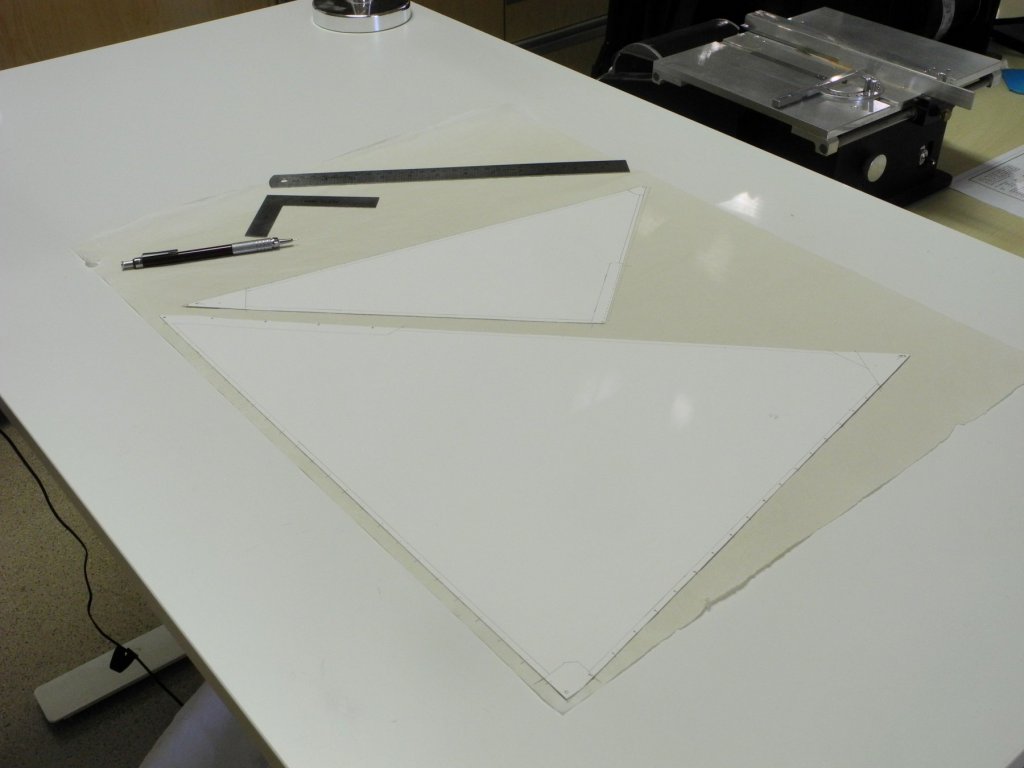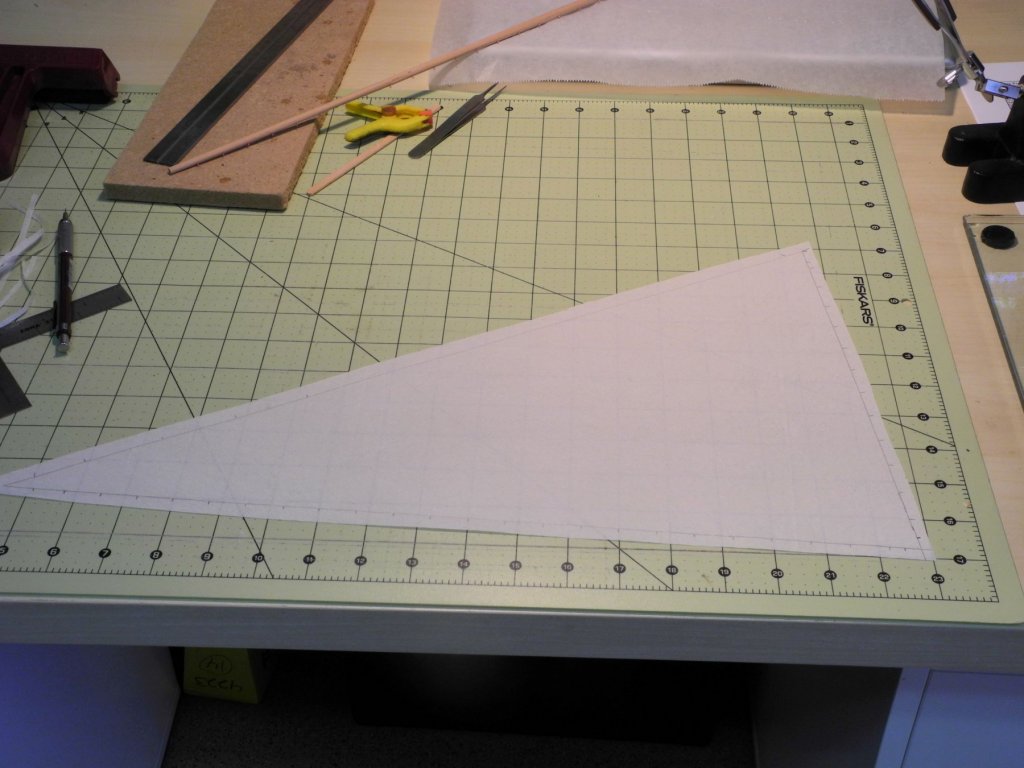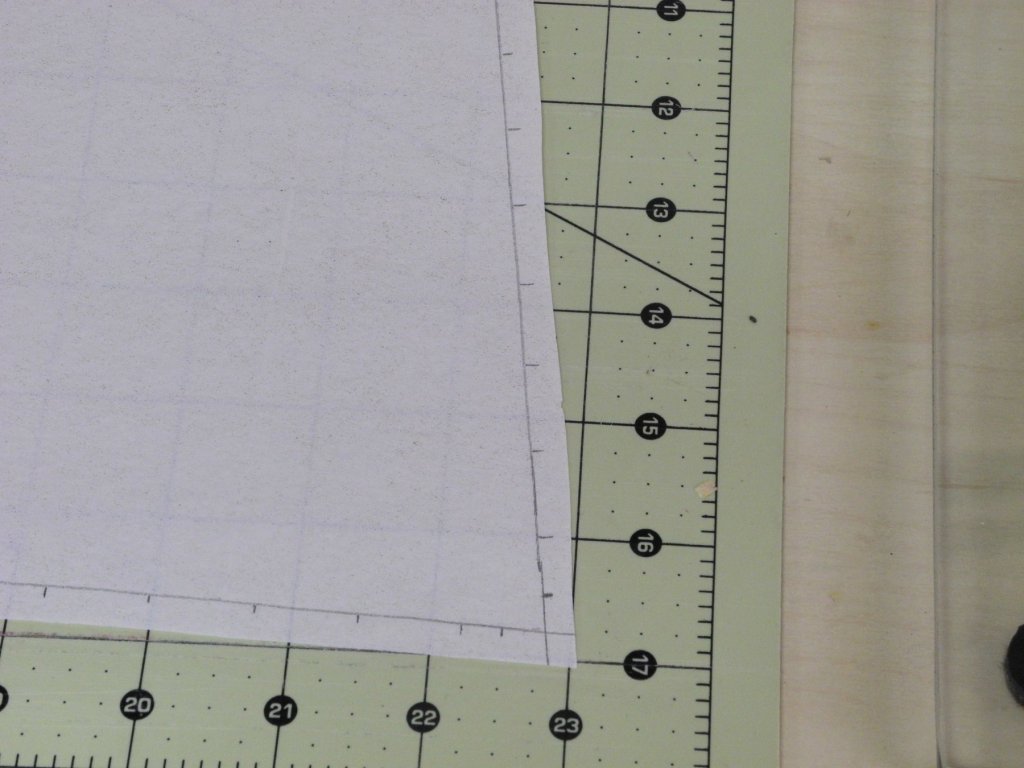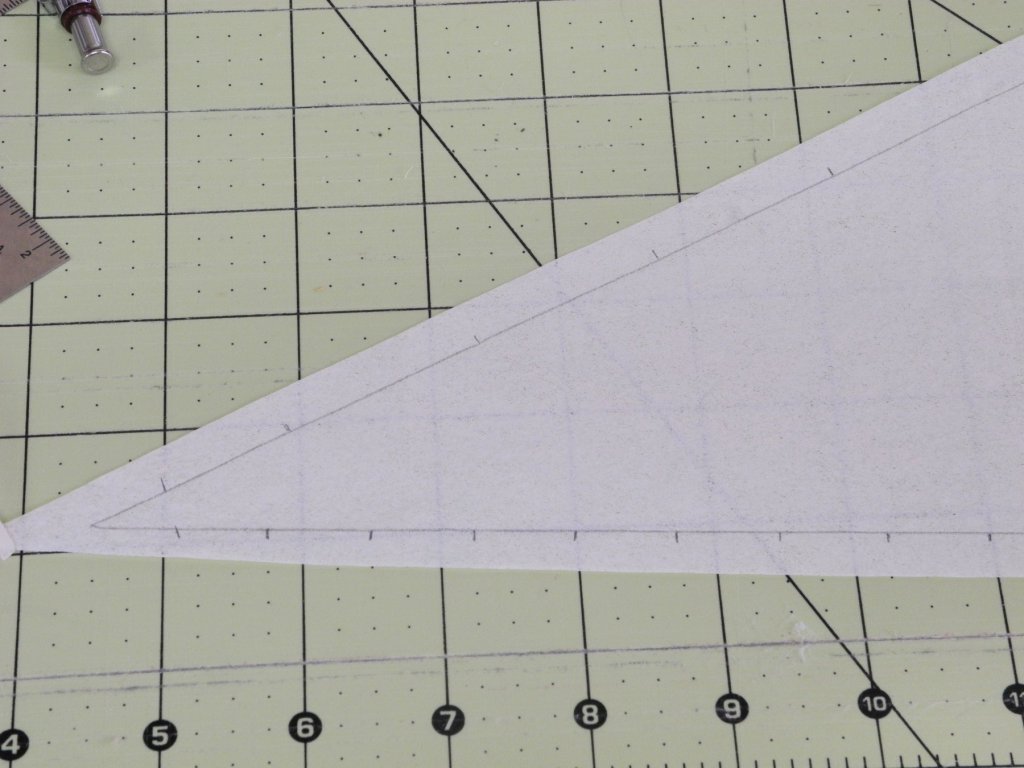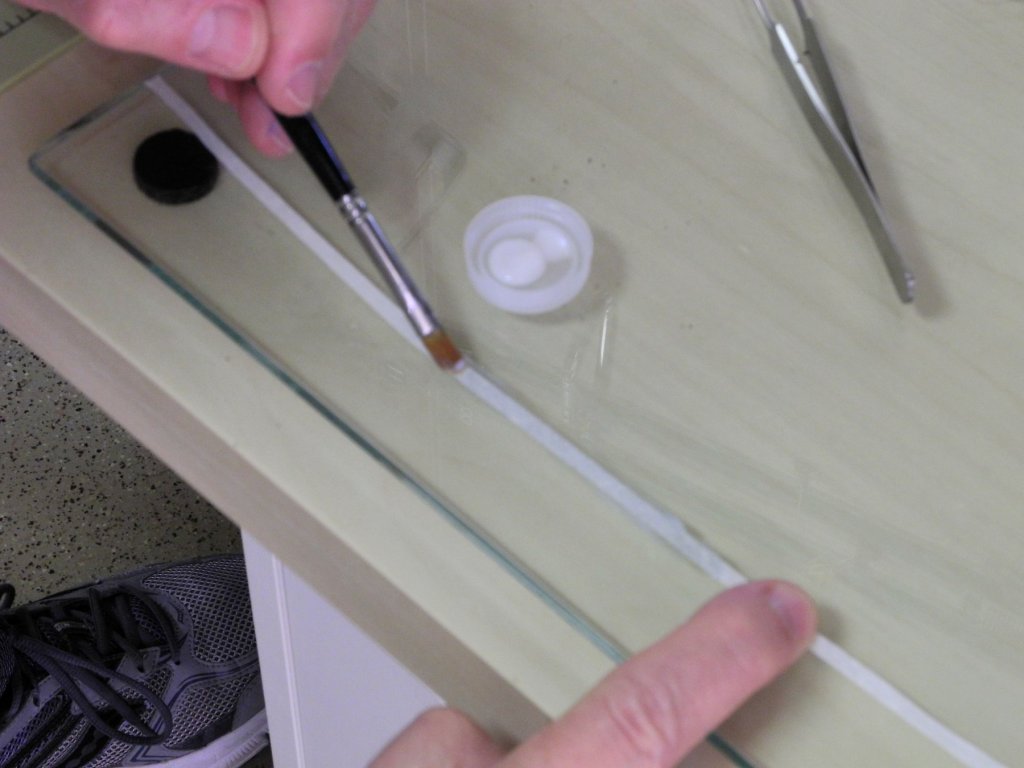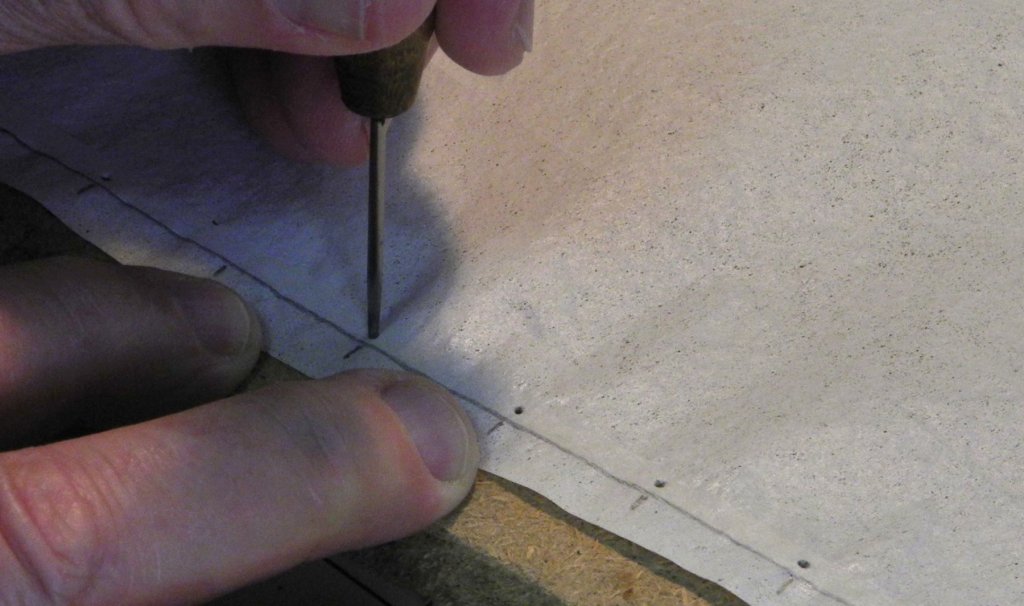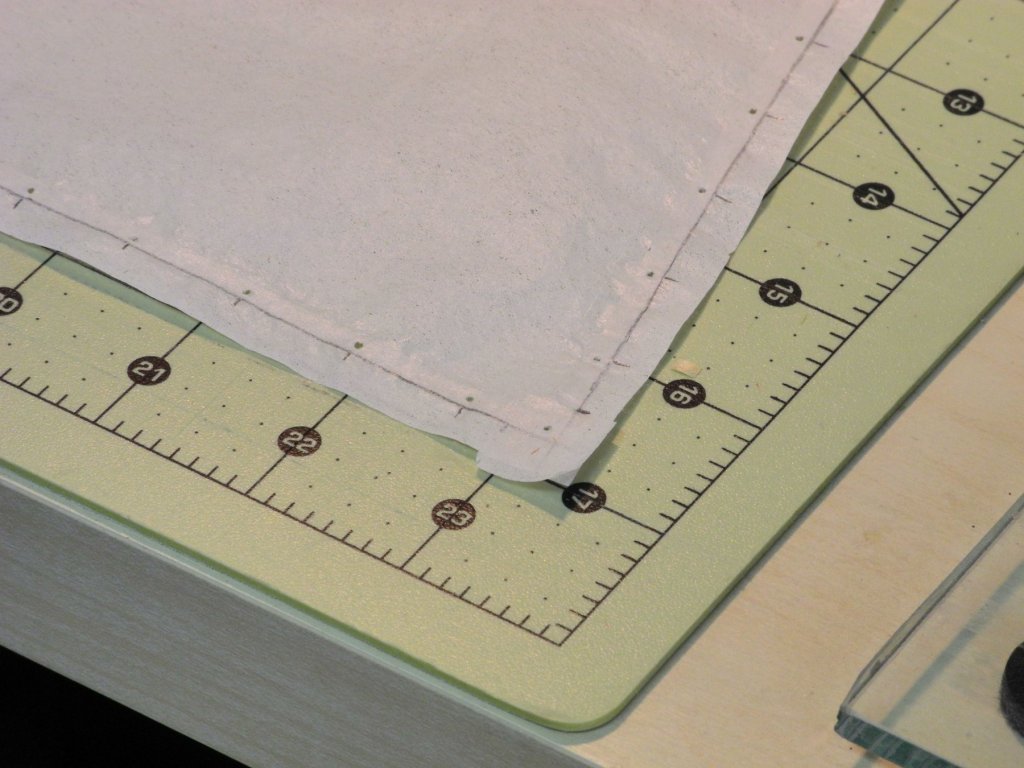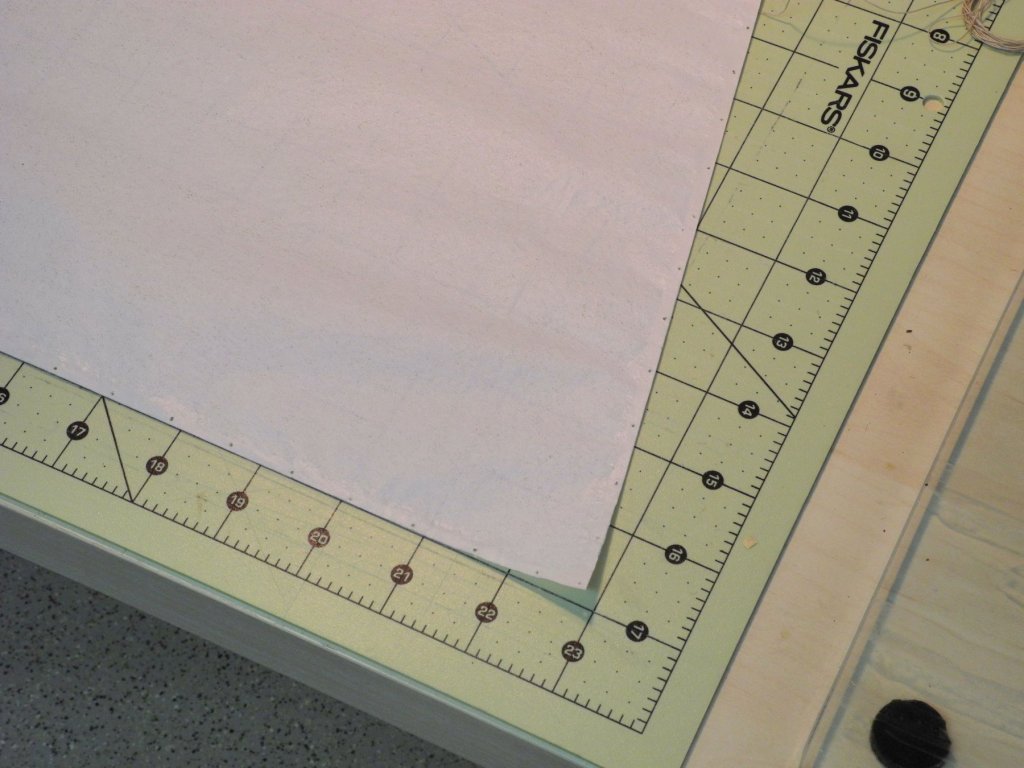-
Posts
1,504 -
Joined
-
Last visited
Content Type
Profiles
Forums
Gallery
Events
Everything posted by Mahuna
-
Hi Peter. I haven't even thought about a display case yet. Would love to see the jib you've made.
-
Thanks, Patrick. It took a while to get it done, but I'm satisfied with the result. Thanks, Brian. The jib is going to be a challenge.
-
Part 85 –Furling the Mainsail Kathryn’s main sail is kept furled during the entire oyster season, since she only goes out for dredging under power. As covered in a previous post, silkspan was used for Kathryn’s sails. Since furling the sails on the model would be a once-only effort with little opportunity for ‘do-overs’ I constructed a jig with sails for practicing the furling. I’m glad I did, because I tried a number of times (ironing the creases out of the sails after each aborted attempt) before I felt comfortable enough to attempt it on the model. I found that the folds in the sail tended to loosen as I moved up the sail for subsequent folds, making the furled sails very loose and not very authentic. In trying to control this, I made some flat bars that would help me keep the folds of the sail somewhat consistent. The ‘jaws’ on the end of the slats would fit around the mast to keep the slats from twisting too much. The completed folds of the sail were held in place by some plastic clamps with a very weak holding power. This process worked for the first few folds, but the use of the slats and clamps became too unwieldy for the subsequent folds, so I stopped using them as I worked to the top of the sail. By then, however, there was a decent base for the rest of the folds. The mast hoops on the real Kathryn have enough weight for them to lie in a stack, but the hoops on the model are so light that they would not lie naturally by themselves. I applied some PVA between each hoop, and held the stack in place with a clamp until dry. The line that was wrapped around the furled sail was secured in place by some diluted white glue at each of the knots. Before doing any of the rigging on the main mast, I decided to prepare and install the wire cables for the shrouds. The short length of the shrouds that wrap around the mast are served with marlin line to protect the mast from chafing by the wire. Using a bench vise and a fly tying vise to stretch the wire, I served the wire by hand using some very thin 007” thread which would simulate ¼” marlin. CA was applied at each end of the serving to keep from unwrapping. The alligator clips holding the loose ends of the thread kept everything tight until the glue was set. The shrouds were then wrapped around the mast at the hounds and crimping tubes were used to join the two sides of each shroud. The jib stay was already installed on the model but needs to hang loose until the jib is installed. I took the opportunity to serve the jib stay, and had to position the model close to the vise setup to accomplish that. The shrouds will be left loose until most of the rigging is completed. Next task will be to rig the main halyard and the boom lift. Thanks all!
-
Thanks Michael. I hadn't thought of using the heat shrink tubing, but it's probably worth a try. Thanks for the suggestion, and I'll try it out in the future. For now, since I have the crimping beads and don't have appropriate shrink tubing, I'll proceed as planed. Thanks Kurt. Hopefully things will proceed from here - we're pretty much on the home stretch with Kathryn. Hi Rich. Thanks, and good luck with your move. Looking forward to seeing your new shop one of these days.
-
Hi Peter. Thanks for checking in. Kathryn's sails, like all others, are in fact made from panels, but I decided not to show the seams because I'd be furling the sails and didn't think the seams would be necessary on the model.
-
Hi Patrick - great to hear from you. Yeah, it's really good that life has got back to being somewhat 'normal'.
-
Part 84 –Topping Lift Kathryn’s Topping Lift consists of a wire pendant hanging off the masthead band via a shackle with a single block at the lower end of the pendant, and the tackle running from the ringbolt at the aft boom band, through the pendant’s single block, and back down through the sheave embedded in the boom just forward of the aft boom band. I was able to find some uncoated stainless steel fishing leader in various sizes that will make acceptable wire stays and shrouds. I also found crimping beads from Beadaholique that will serve as the fasteners for the wire components. Crimping pliers from Xuron are the tool used for crimping the fasteners. The rearmost jaws perform the actual crimping, and the forward jaws help to shape the crimped beads. I used two crimping beads at each end of the Topping Lift Pendant. The following photo shows the completed and installed Topping Lift. This completes the posting for the work that was done prior to my long absence. Furling the Mainsail will be the topic for the next post.
-
Thanks, Druxey - I don't mind showing off Jim's tools, wouldn't be without them! Thanks Roger. It is good to be back.
-
Part 83 –Mainsail cont’d Hi Everyone Thanks again for all of the good wishes during a very difficult time. Things have improved significantly and we’re back to fairly normal circumstances, so I’ve been able to put a little time in the shop and back to work on Kathryn. The next couple of posts will catch us up on work that had already been completed, but had not yet been posted in the log. We had left off with attaching the mast hoops to the mainsail. There was still a little more work required before bending the sail to the mast. Three lines were seized to ringbolts at the boom jaws, as in the following photo. The line at the bottom of the photo is for wrapping the furled sail. The middle line is for lacing the sail to the boom. The top line is for the boom lift. Before the sail can be laced to the boom, 3 reefing tackles need to be attached to the boom. These lines are spliced to form loops that encircle the boom, are then run up to the leech of the sail, down through the reefing (cheek) blocks on the boom and finally to cleats positioned on the boom. The loops formed by these splices need to be adjustable, so I formed them as follows: First the line for the reefing tackle was passed through a needle threader, which was then positioned through the eye of the needle. The line was then pulled through the eye of the needle. The needle was passed through the line and the line was pulled through the opening made by the needle to form a loop and the first part of the splice. This process was repeated again to form the rest of the splice. The loop was positioned on the boom and the reefing tackle was then pulled tight to form a loop that properly fit the diameter of the boom. The splice was hit with a spot of diluted white glue and rolled between thumb and finger to round it, and when dry the loose end of the line was trimmed. The following photo shows a reefing tackle that is being positioned on the boom, along with one that has been tightened and trimmed. The mainsail was then laced to the boom by running the lacing line through the ringbolts and the ‘grommets’ on the sail. (These grommets had been formed by punching a hole through a spot of white glue that was positioned on the sail). The sail/boom combination was installed by sliding the mast hoops down the mast, and then positioning the boom in its proper location, held by the pin that is between the two jaws. As can be seen in the above photo, the mainsail is trimmed smaller than the actual measurements to prevent the furled sail from appearing too bulky. The next post will address installation of the topping lift. Thanks everyone – it’s good to be back at work!
-
Hi Patrick - just catching up again. That tender will look really nice. I'm continually amazed at the scale you're able to work in.
-
Hi Everyone.. I'd like to wish you all a very Merry Christmas and a healthy and Happy New Year. There's been no progress on Kathryn since September, due to the serious issues we've been dealing with. However, all of the daily doctor visits and treatments have come to an end and we're starting to get back to our normal happy lives again. I'm hoping to get back to Kathryn's rigging in the near future. In the meantime, thanks again for all of the wonderful comments on the build, and I'm looking forward to being active on MSW again. Best regards to all!
-

Tools, tools and more tools....
Mahuna replied to CPDDET's topic in Modeling tools and Workshop Equipment
I agree about the micromotor. I have a Marathon model - fairly expensive but I used it for years when I was bird-carving and it has been really valuable in the ship modeling. Any micromotor should have a foot pedal for optimum control. Less expensive micromotor options are available on eBay, but I don't know anything about their durability. https://www.ebay.com/itm/New-Dental-Lab-Marathon-Electric-Micromotor-Polishing-Unit-N3-35K-RPM-Handpiece/380881901575?hash=item58ae549807:g:qxgAAOSw5FpZmpTq:rk:2:pf:0 -
Hi Patrick Just checking in after a prolonged absence and very impressed with the progress on Genesis. Bravo!
-
UPDATE Hi Everyone. I'm sorry that it's been quite a while since my last post. We've had some serious issues at home lately, and my focus has been there rather than modeling. These issues will continue for the foreseeable future, so I'm not sure how much modeling time (or focus) I'll have. If I do make some progress on Kathryn I'll continue to post updates. Thanks everyone for all of your 'Likes' and comments through the build - they have meant a lot to me.
-
Hmm - that's interesting, Ron. I looked back at all of the photos I have of Kathryn and didn't find any furled sails that look like that. Here's a photo that was taken during the HAER survey during the 1990's: Here are a couple I took in 2015, right after her rebuild: And here are a couple I took in 2017 during my last visit to Kathryn: Also, I took a quick look through the book "Working Skipjacks of Deal Island" - all of the skipjacks shown in the hundreds of photos are operating under power from the yawl boats, so they all had furled sails (or no sails in one instance) and none showed the arrangement you're referring to. So, I'll be leaving things the way they are. Thanks.
-
Kurt - thanks for your kind words. Both hobbies - ship modeling and bird carving - have their own unique challenges and have been very satisfying for me. I'm still learning and don't consider myself a 'master' by any stretch of the imagination, but I'm enjoying the whole experience. Druxey - thanks! Your sail-making supplement answered a lot of questions for me - without it I don't think I would have attempted to put sails on Kathryn.
-
Part 82 –Mainsail cont’d After creating Kathryn’s main sail, it was easier to install the mast hoops on the sail before bending the sail to the mast. Kathryn’s lower mast hoops are attached to the sail using a jackline that runs through the lower grommets, allowing the mast hoops to move up and down with some flexibility. The upper mast hoops are seized directly to the sail. Since the sail will be furled, I decided to seize all of the mast hoops directly to the sail using some light thread. The first action was to secure the mast hoop by running a loop around the hoop and running the loose ends through the loop. The loop and loose ends were pulled tight and then were held using a couple of third hands, and the line was fixed in place using some matte medium. After the knot was set and with the mast hoop held perpendicular to the sail, the two loose ends were run through the sail from either side. The two lines were tied in a knot below the mast hoop. And then the loose ends were brought above the hoop and tied again. The process was repeated, tying knots below and above the hoop at least once more, and then the knots were painted with matte medium to secure them. After the medium had set, the loose ends were trimmed. After all of the hoops were attached, the lower double block for the main halyard was seized to the head of the sail. Finally, lines for securing the lower corners of the sail were seized to the tack and clew. The mainsail is now ready for installation on the model, which will be covered in the next post. Cheers everyone!
-
Part 81 –Mainsail Kathryn’s sails will be furled, so I decided to use silkspan for the sails to reduce the bulk of the sails. David Antscherl offers a very good process for using silkspan in his Swan IV Sail Making Supplement, and I used some of his suggestions in making the mainsail. I found a good source of silkspan – Brodak Control Line Flying. They offer a medium weight and a lite weight version, and both come in packages containing 2 24” x 36” sheets. http://brodak.com/catalogsearch/result/?q=silkspan&x=0&y=0 The first step was to build a frame that would hold a large piece of silkspan. I mounted the silkspan to the frame using chart tape, and then held the frame vertically in an old artists easel. Following David’s suggestions for painting the silkspan, I mixed acrylic titanium white and raw umber to give an off-white color, then diluted the paint so that it could be used in an airbrush. I have a couple of cheap single-action airbrushes that gave a nice broad spray for coverage. Cardstock was used to make patterns for the sails based on the drawings of Kathryn’s sails in the HAER documentation. These patterns had the locations of all of the grommets for mounting mast hoops and other rigging details marked where appropriate. Using the outside of the pattern as a guide, the outline of the sail was drawn on the silkspan and the location of all of the grommets and reinforcing pieces was marked OUTSIDE the boundary of the sail. Making the marks outside the boundary enabled me to keep the actual sail clean and free of pencil marks. The sail was cut out leaving enough excess to still show these marks. Reinforcing strips of silkspan were cut for the areas that would have lines attached. These strips were stuck onto the silkspan using acrylic matte medium. The medium was applied to the strips using an artist’s paintbrush and then while the medium was still wet the strip was attached to the sail. More medium was brushed over the strip to ensure a good bond. The matte medium remains flexible after it has dried. After the reinforcing strips had set, a small awl was used to punch holes in the sail’s perimeter as indicated by the pencil marks that had been made previously. The sail was then trimmed just inside the border line to arrive at the final correct size. Because the sails will be furled, I decided to make both the mainsail and the jib somewhat smaller than the full sails. The mainsail is about 2/3 of the height of the full sail, while the foot of the sail remained at the correct length. Also, due to the furling, I didn't try to make any of the seams on the sail. The next step is to install the mast hoops and other connections on the mainsail, which will be the subject of the next post. Thanks everyone!
About us
Modelshipworld - Advancing Ship Modeling through Research
SSL Secured
Your security is important for us so this Website is SSL-Secured
NRG Mailing Address
Nautical Research Guild
237 South Lincoln Street
Westmont IL, 60559-1917
Model Ship World ® and the MSW logo are Registered Trademarks, and belong to the Nautical Research Guild (United States Patent and Trademark Office: No. 6,929,264 & No. 6,929,274, registered Dec. 20, 2022)
Helpful Links
About the NRG
If you enjoy building ship models that are historically accurate as well as beautiful, then The Nautical Research Guild (NRG) is just right for you.
The Guild is a non-profit educational organization whose mission is to “Advance Ship Modeling Through Research”. We provide support to our members in their efforts to raise the quality of their model ships.
The Nautical Research Guild has published our world-renowned quarterly magazine, The Nautical Research Journal, since 1955. The pages of the Journal are full of articles by accomplished ship modelers who show you how they create those exquisite details on their models, and by maritime historians who show you the correct details to build. The Journal is available in both print and digital editions. Go to the NRG web site (www.thenrg.org) to download a complimentary digital copy of the Journal. The NRG also publishes plan sets, books and compilations of back issues of the Journal and the former Ships in Scale and Model Ship Builder magazines.



